Birds never observed
I never observed these Swiss birds - something to aim for!
A total of 100 species is included.
Eurasian penduline-tit / Beutelmeise (Remiz pendulinus)
Also known as: Eurasian penduline tit
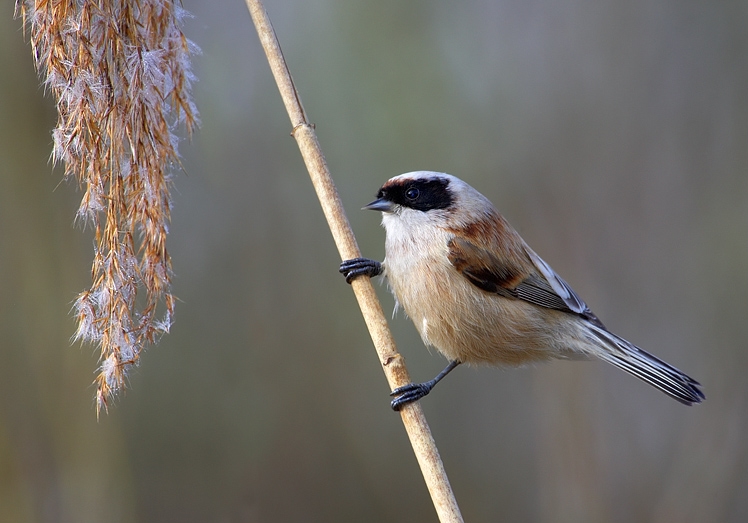
Wikipedia: Eurasian penduline-tit Source: OTHER Remiz_pendulinus_3_%28Martin_Mecnarowski%29.jpg
Classification: Genus Remiz; Family Titmice (Paridae)
vulnerable Seasonal Behavior:
Calls:
Physical details: length=11 cm, wingspan=16-17 cm, weight=8-10 g
Habitats: Wetland Song: Nabu: In den Gesang werden viele Pausen, Triller und Rufe eingebaut. [Link]
Song attributes: Melody: sings 5-19 seconds, fast, Frequency: 1-8 KHz
Details Wikipedia eBird Vogelwarte BirdLife ZH ornitho.ch Xeno-Canto BirdID NABU
Northern bald ibis / Waldrapp (Geronticus eremita)

Wikipedia: Northern bald ibis Source: OTHER 1200px-Waldrapp_Geronticus_eremita.jpg
Classification: Genus Geronticus; Family Threskiornithidae
General:
Where to find it:
Vocalization:
Calls:
Physical details: length=70-80 cm, wingspan=125-135 cm, weight=1080-1230 g
Details Wikipedia eBird Xeno-Canto BirdID NABU
Ortolan bunting / Ortolan (Emberiza hortulana)

Wikipedia: Ortolan bunting Source: OTHER 1200px-Ortolan_bunting_in_Sierra_de_Guara%2C_Aragon%2C_Spain.jpg
Classification: Genus Buntings (Emberiza); Tribe Emberizini; Subfamily Emberizinae; Family Fringillidae
critically endangered Nur 1-5 Brutpaare in der Schweiz nach Vogelwarte.ch
Vocalization:
Song:
Calls:
Physical details: length=16-17 cm, wingspan=23-29 cm, weight=81-96 g
Habitats: Agricultural Song: First about 4 hlhlhlhl then a single higher or lower note
Song attributes: Melody: stereotype melodic (hlhlhlhl), fast, Frequency: 3-5 KHz
♫ Source: XENOCANTO XC726530 - Ortolan Bunting - Emberiza hortulana - song recorded in Spain, first 4 hlhlhlhl then a single higher note.mp3 Spain (song)

♫ Source: XENOCANTO XC727606 - Ortolan Bunting - Emberiza hortulana - song, first 4 hlhlhlhl, then 1 or 2 swoops.mp3 (song)

♫ Source: XENOCANTO XC652668 - Ortolan Bunting - Emberiza hortulana - first 4 or so hl, then a lower note - seems the close is highly variable.mp3 (song)

Details Wikipedia eBird Vogelwarte BirdLife ZH ornitho.ch Xeno-Canto BirdID NABU
Wallcreeper / Mauerläufer (Tichodroma muraria)

Wikipedia: Wallcreeper Source: OTHER 1200px-Wallcreeper_%28Tichodroma_muraria%29_female_Piatra_Craiului.jpg
Classification: Genus Tichodroma; Family Sittidae
General:
Song:
Calls:
Physical details: length=16 cm, wingspan=27-32 cm, weight=15-19 g
Habitats: Mountain Song: 5-notes LlmHh with pirol-like slowness and tone.
Song attributes: Melody: stereotype melodic, fast, Frequency: 1-5 KHz
Details Wikipedia eBird Vogelwarte BirdLife ZH ornitho.ch Xeno-Canto BirdID NABU
Common redpoll / Birkenzeisig (Acanthis flammea)
Alternate classification: Fringilla flammea, Carduelis flammea

Wikipedia: Common redpoll Source: OTHER 1200px-Carduelis_flammea_CT6.jpg
Classification: Genus Redpolls (Acanthis); Subfamily Carduelinae; Family Fringillidae
This bird appears across the great seas in the following continents: Europe, North America.
roter Punkt auf Kopf, sonst weiss+braun, teilweise hell-rot auf brust.
Behavior:
Song:
Calls:
Physical details: length=11-14 cm, wingspan=20-25 cm, weight=9-16 g
Habitats: Mountain Song: A few chirps and a trill, then repeat.
Song attributes: Melody: simple rhythmic, fast, Frequency: 2-6 KHz Special sounds: trill
Details Wikipedia eBird Audubon AllAboutBirds Xeno-Canto BirdID NABU
Bar-tailed godwit / Pfuhlschnepfe (Limosa lapponica)

Wikipedia: Bar-tailed godwit Source: OTHER 1200px-Bar-tailed_Godwit.jpg
Classification: Genus Limosa; Family Shorebirds (Scolopacidae)
This bird appears across the great seas in the following continents: Europe, North America, Africa, Asia.
Seasonal Behavior: Other: Eine junge Pfuhlschnepfe scheint einen Non-Stop-Rekord für Zugvögel aufgestellt zu haben. Der Vogel sei über 13.500 Kilometer von Alaska in den australischen Bundesstaat Tasmanien geflogen, das berichteten mehrere Medien übereinstimmend. [Link]
Habitats: Wetland Details Wikipedia eBird Vogelwarte BirdLife ZH ornitho.ch Audubon AllAboutBirds Xeno-Canto NABU
Woodchat shrike / Rotkopfwürger (Lanius senator)

Wikipedia: Woodchat shrike Source: OTHER 1200px-Woodchat_shrike_%28Lanius_senator_senator%29.jpg
Classification: Genus Lanius; Family Shrikes (Laniidae)
critically endangered General:
Song:
Calls:
Physical details: length=18 cm, wingspan=26-28 cm, weight=30-40 g
Habitats: Agricultural Song:
Song attributes: Melody: sings 30 seconds or longer, fast, Frequency: 2-6 KHz Special sounds: mimicry
Details Wikipedia eBird Vogelwarte BirdLife ZH ornitho.ch Xeno-Canto BirdID NABU
Rock bunting / Zippammer (Emberiza cia)

Wikipedia: Rock bunting Source: OTHER 1200px-Rock_Bunting_%28Cochem%29.jpg
Classification: Genus Buntings (Emberiza); Tribe Emberizini; Subfamily Emberizinae; Family Fringillidae
General:
Song:
Calls:
Physical details: length=16 cm, wingspan=21-27 cm, weight=21-29 g
Habitats: Mountain Song: AppearanceAndIdentification: orange-brauner bauch, weisse brust+kopf mit 3 schwarzen streifen am kopf (unter/am/ueber Augen), braun+dunkelbraun auf Fluegeln; aber Weibchen eher braun
Song: Notes from 2022: Short song, relatively long pause, repeated with slight variation? Has a very short triller of just 3 notes.
May have heard and seen one walking parallel to the Aa on the way to Pfaeffikersee today, though the visual ID is very uncertain; the Xeno-Canto song here sounds different than my 2022 description - musical like a chaffinch but rising, not falling.
Song attributes: Melody: stereotype melodic, fast, Frequency: 2-9 KHz Special sounds: trill, mimicry
♫ Source: XENOCANTO XC653755 - Rock Bunting - Emberiza cia - song, recorded in Spain.mp3 Spain (song)

Details Wikipedia eBird Vogelwarte BirdLife ZH ornitho.ch Xeno-Canto BirdID NABU
Collared flycatcher / Halsbandschnäpper (Ficedula albicollis)
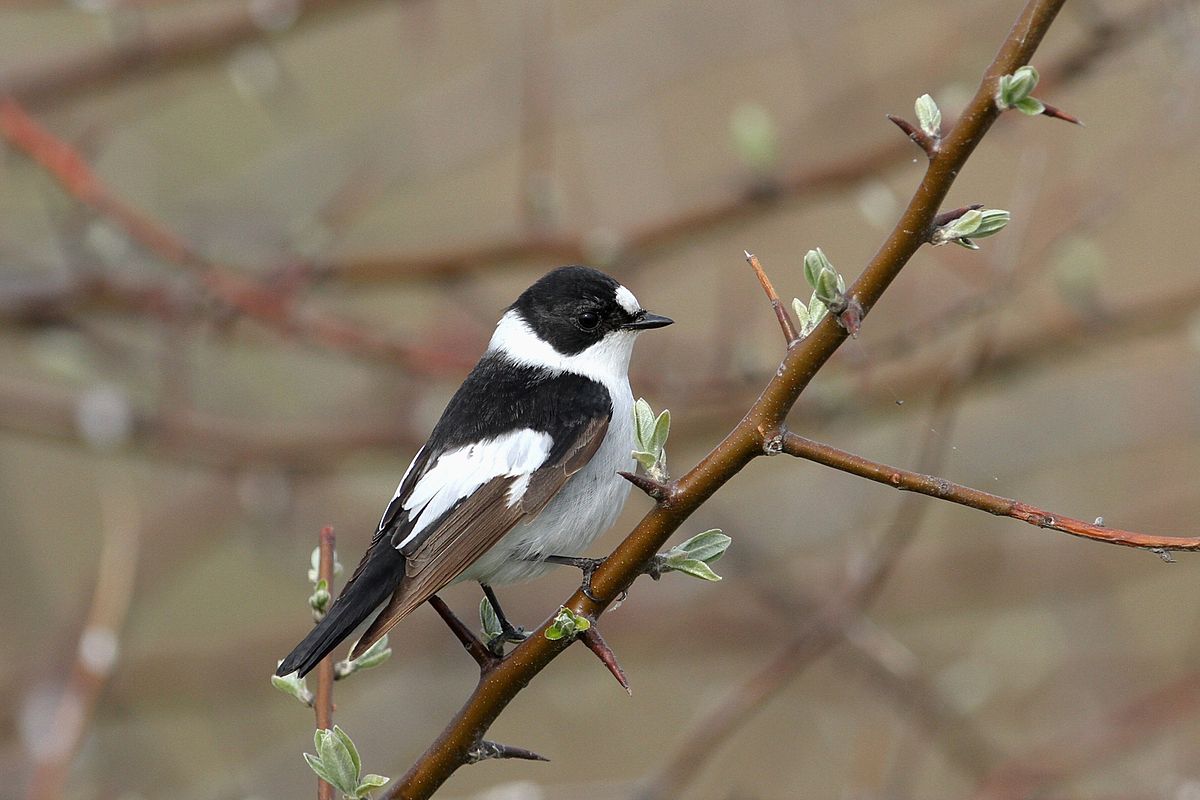
Wikipedia: Collared flycatcher Source: OTHER 1200px-Collared_flycatcher_%28Ficedula_albicollis%29.jpg
Classification: Genus Ficedula; Family Old world flycatchers (Muscicapidae)
General:
Habitats: Forest Song: Simple tune...
Song attributes: Mnemnoic: Mein Halsband, mein Halsband, er schnäppt Melody: stereotype melodic, fast, Frequency: 3-7 KHz
♫ Source: XENOCANTO XC727811 - Collared Flycatcher - Ficedula albicollis - song, recorded in Croatia.mp3 (song)

♫ Source: XENOCANTO XC727811 - Collared Flycatcher - Ficedula albicollis - song is variable, this improvises on a 4-note theme.mp3 (song)

Details Wikipedia eBird Vogelwarte BirdLife ZH ornitho.ch Xeno-Canto NABU
Bearded reedling / Bartmeise (Panurus biarmicus)

Wikipedia: Bearded reedling Source: OTHER 1200px-Panurus_biarmicus_-Oare_Marshes%2C_Kent%2C_England_-male-8_%283%29.jpg
Classification: Genus Panurus; Family Old world warblers (Sylviidae)
Vocalization:
Song:
Calls:
Physical details: length=12 cm, wingspan=16-18 cm, weight=12-18 g
Habitats: Wetland Song: Automatically generated from Xeno-Canto recording
Song attributes: Frequency:
♫ XC765306 - Bearded Reedling - Panurus biarmicus - two types of calls, one-note and two-note. Source: XENOCANTO XC765306 - Bearded Reedling - Panurus biarmicus - two types of calls, one-note and two-note.mp3 (call)

Call: Chirping
♫ Source: XENOCANTO XC765306 - Bearded Reedling - Panurus biarmicus - two types of calls, one-note and two-note.mp3 (song)

Call attributes: Melody: simple rhythmic, fast, Frequency: 3-7 KHz
Details Wikipedia eBird Vogelwarte BirdLife ZH ornitho.ch bird-song.ch Xeno-Canto BirdID NABU
Alpine accentor / Alpenbraunelle (Prunella collaris)
Alternate classification: Sturnus collaris
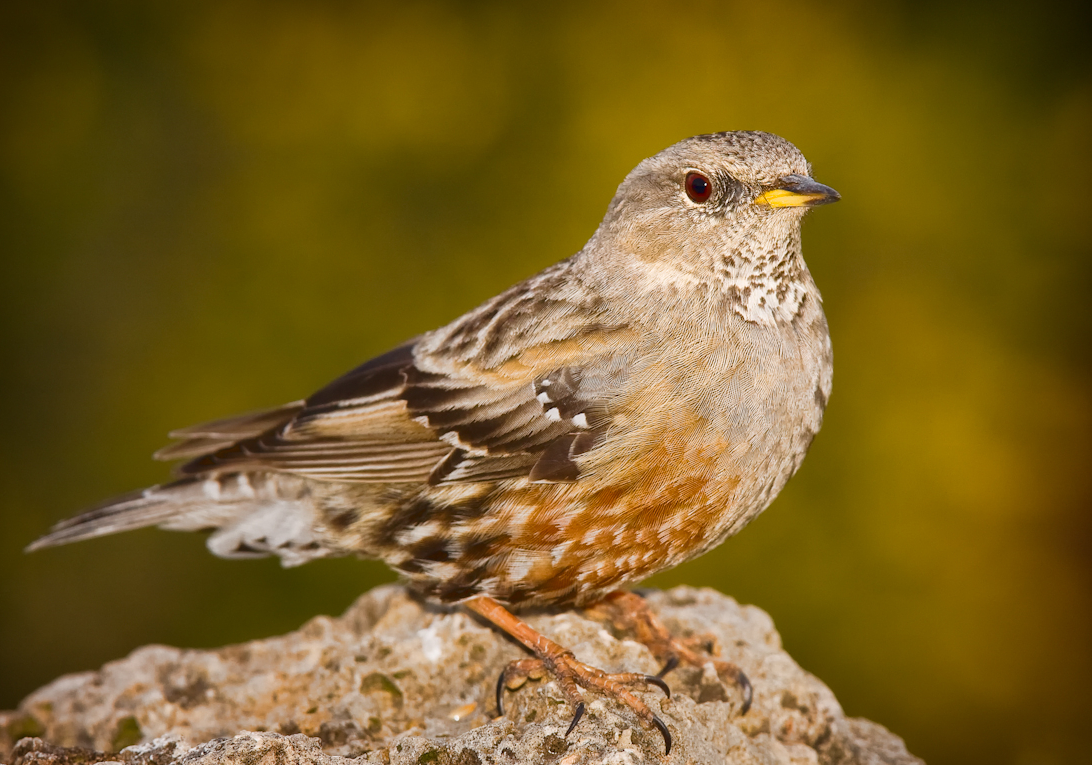
Wikipedia: Alpine accentor Source: OTHER Alpine_accentor_saganta.jpg
Classification: Genus Prunella; Family Sparrows (Passeridae)
General:
Song:
Calls:
Physical details: length=18 cm, wingspan=30-32 cm, weight=37-43 g
Habitats: Mountain Song: Fast, long, chirpy
Song attributes: Melody: sings 30 seconds or longer, fast, Frequency: 1-8 KHz
♫ Source: XENOCANTO XC688398 - Alpine Accentor - Prunella collaris - long song recorded in France.mp3 (song)

Details Wikipedia eBird Vogelwarte BirdLife ZH ornitho.ch Xeno-Canto BirdID NABU
Hawfinch / Kernbeisser (Coccothraustes coccothraustes)

Wikipedia: Hawfinch Source: OTHER 1200px-Coccothraustes_coccothraustes_Parco_Della_Piana_around_Firenze%2C_Italy.jpg
Classification: Genus Coccothraustes; Subfamily Carduelinae; Family Fringillidae
General:
Calls:
Physical details: length=18 cm, wingspan=29-33 cm, weight=46-70 g
Habitats: Forest Song: Automatically generated from Xeno-Canto recording
Song attributes: Frequency:
♫ XC712663 - Hawfinch - Coccothraustes coccothraustes - whit whit tsirp, recorded in Sweden, redubbed by me to a call. Source: XENOCANTO XC712663 - Hawfinch - Coccothraustes coccothraustes - whit whit tsirp, recorded in Sweden, redubbed by me to a call.mp3 (call)

Call: Found no references to song
♫ Source: XENOCANTO XC712663 - Hawfinch - Coccothraustes coccothraustes - whit whit tsirp, recorded in Sweden, redubbed by me to a call.mp3 (song)

Call attributes: Call melody: one note, fast, Frequency: 4-8 KHz,
Details Wikipedia eBird Vogelwarte BirdLife ZH ornitho.ch bird-song.ch Xeno-Canto BirdID NABU
Little owl / Steinkauz (Athene noctua)
Alternate classification: Strix noctua

Wikipedia: Little owl Source: OTHER 1200px-Mochuelo_Com%C3%BAn_%28_Athene_noctua_%29%281%29.jpg
Classification: Genus Athene; Family Strigidae
Behavior:
Vocalization:
Song:
Calls:
Physical details: length=21-23 cm, wingspan=54-58 cm, weight=140-220 g
Habitats: Agricultural Details Wikipedia eBird Vogelwarte BirdLife ZH ornitho.ch bird-song.ch Xeno-Canto BirdID NABU
Curlew sandpiper / Sichelstrandläufer (Calidris ferruginea)

Wikipedia: Curlew sandpiper Source: OTHER 1200px-Calidris_ferruginea%2C_winter_adult%2C_Pak_Thale.jpg
Classification: Genus Calidris; Family Shorebirds (Scolopacidae)
This bird appears across the great seas in the following continents: Europe, North America, South America, Africa, Asia.
Etymology:
Calls:
Physical details: length=18-19 cm, wingspan=42-46 cm, weight=50-65 g
Habitats: Wetland Details Wikipedia eBird Vogelwarte BirdLife ZH ornitho.ch Audubon AllAboutBirds Xeno-Canto BirdID NABU
Grey-headed woodpecker / Grauspecht (Picus canus)
Also known as: Grey-faced woodpecker, Gray-headed woodpecker
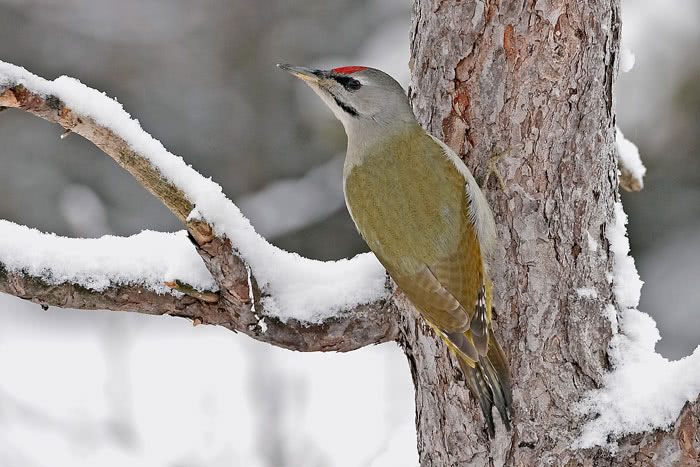
Vogelwarte Grauspecht. Note that it's quite green despite its name. Source: VOGELWARTE Vogelwarte Grauspecht.jpg
Classification: Genus Picus; Family Woodpeckers (Picidae)
Behavior:
Song:
Habitats: Forest Song: Drumming in lieu of song. Fast, constant, somehow less harsh than great and middle spotted woodpeckers.
Song attributes: Melody: simple rhythmic, fast, Frequency: 0-4 KHz Special sounds: drumming
♫ Source: XENOCANTO XC552636 Kleinspecht drumming.mp3 (drumming)
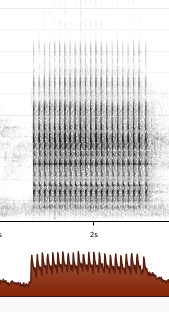
Call: In the FOK course, Christina said he sounds like he's running out of gas, which is a great description.
♫ Source: XENOCANTO XC623125 grauspecht call.mp3 (call)
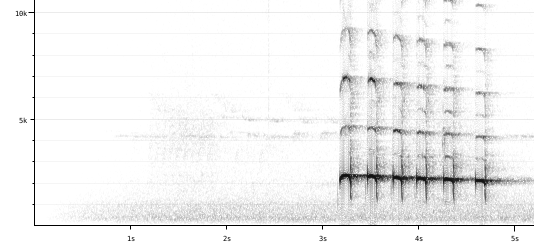
Call attributes: Call melody: simple rhythmic, slow, Frequency: high (3-9 KHz),
Details Wikipedia eBird Vogelwarte BirdLife ZH ornitho.ch bird-song.ch Xeno-Canto NABU
White-backed woodpecker / Weissrückenspecht (Dendrocopos leucotos)
Alternate classification: Picoides leucotos
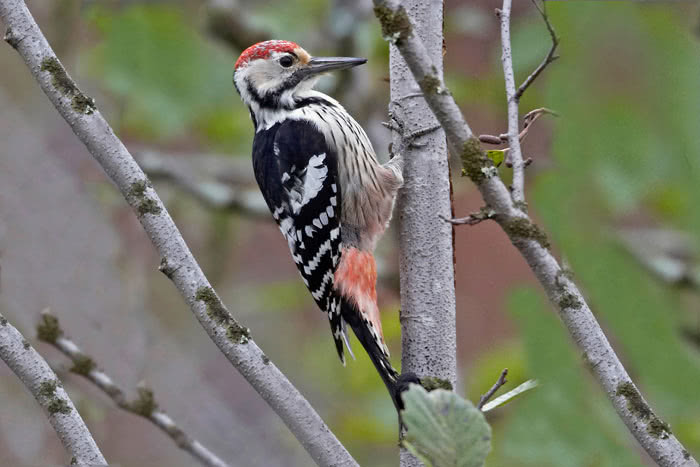
Vogelwarte Weissrueckenspecht. Source: VOGELWARTE Vogelwarte Weissrueckenspecht.jpg
Classification: Genus Dendrocopos; Family Woodpeckers (Picidae)
Da es selten zu sehen ist, habe ich wenig beschrieben.
Habitat:
Habitats: Forest Details Wikipedia eBird Vogelwarte BirdLife ZH ornitho.ch Xeno-Canto NABU
Red-billed chough / Alpenkrähe (Pyrrhocorax pyrrhocorax)
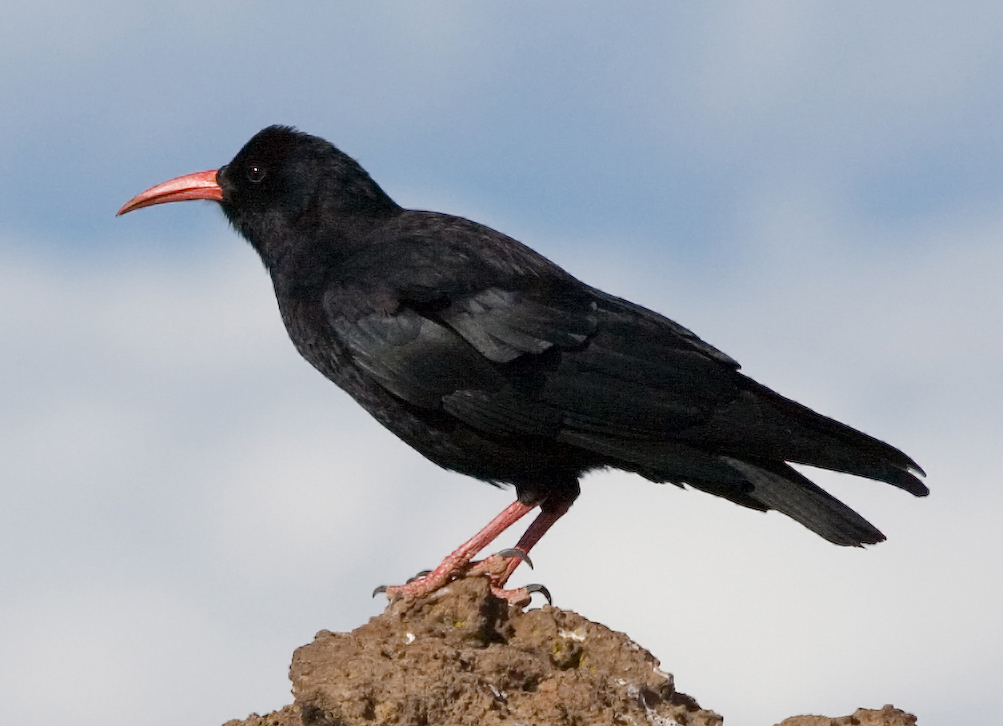
Wikipedia: Red-billed chough Source: OTHER Pyrrhocorax_pyrrhocorax_-standing-8.jpg
Classification: Genus Pyrrhocorax; Family Corvidae
endangered Calls: Ebird: Gives a variety of calls, including a loud “chaw!”, as well as higher-pitched gull-like mewing calls. [Link]
Habitats: Mountain Call: Higher-pitched falling graak.
Call attributes: Call melody: non-musical, slow, Frequency: low (1-3 KHz), Special sounds: cawing.
Details Wikipedia eBird Vogelwarte BirdLife ZH ornitho.ch Xeno-Canto NABU
Bohemian waxwing / Seidenschwanz (Bombycilla garrulus)
Alternate classification: Lanius garrulus

Wikipedia: Bohemian waxwing Source: OTHER 1200px-Bombycilla_garrulusII.jpg
Classification: Genus Bombycilla; Family Bombycillidae
This bird appears across the great seas in the following continents: Europe, North America.
Seasonal Behavior:
Song:
Calls:
Physical details: length=18 cm, wingspan=32-35 cm, weight=50-75 g
Habitats: Settlement Song:
Song attributes: Melody: simple rhythmic, fast, Frequency: 5-7 KHz
Details Wikipedia eBird Vogelwarte BirdLife ZH ornitho.ch Audubon AllAboutBirds Xeno-Canto BirdID NABU
Common rosefinch / Karmingimpel (Carpodacus erythrinus)
Alternate classification: Erythrina erythrina

Wikipedia: Common rosefinch Source: OTHER Common_Rosefinch_Neora_Valley_National_Park_Darjeeling_West_Bengal_India_30.04.2016.jpg
Classification: Genus Carpodacus; Subfamily Carduelinae; Family Fringillidae
endangered General:
Song:
Calls:
Physical details: length=14-15 cm, wingspan=24-26 cm, weight=19-27 g
Habitats: Wetland Song:
Song attributes: Melody: stereotype melodic, fast, Frequency: 2-6 KHz
Details Wikipedia eBird Vogelwarte BirdLife ZH ornitho.ch Xeno-Canto BirdID NABU
White-winged snowfinch / Schneesperling (Montifringilla nivalis)
Alternate classification: Fringilla nivalis
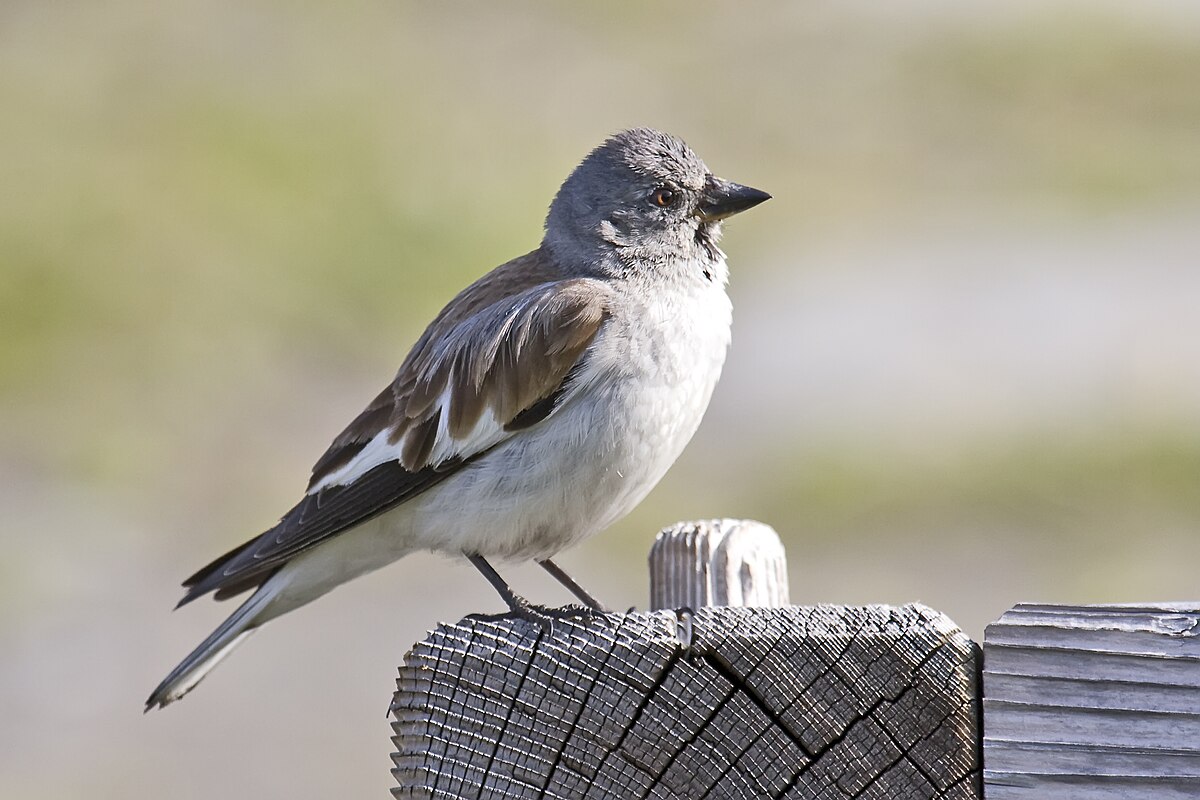
Wikipedia: White-winged snowfinch Source: OTHER 1200px-Snowfinch.jpg
Classification: Genus Montifringilla; Family Sparrows (Passeridae)
More white and gray than other sparrows, bronw only on back (wings), v. white when flying. almost always 1500m+, eher im Sueden inkl Graubuenden
Vocalization:
Song:
Calls:
Physical details: length=17 cm, wingspan=34-38 cm, weight=35-45 g
Habitats: Mountain Song: The XC song I downloaded is a faint chirping. Should follow up on song - most talk about calls.
Song attributes: Melody: simple rhythmic, slow, Frequency: 4-6 KHz
Details Wikipedia eBird Vogelwarte BirdLife ZH ornitho.ch Xeno-Canto BirdID NABU
Black grouse / Birkhuhn (Lyrurus tetrix)
Alternate classification: Tetrao tetrix
Also known as: Eurasian black grouse

Wikipedia: Black grouse Source: OTHER 1200px-Black_Grouse_Nationalpark_Bayerischer_Wald.jpg
Classification: Genus Lyrurus; Subfamily Grouses (Tetraoninae); Family Turkeys (Phasianidae)
Rolf hat einen auf dem Amdener Hoehenweg Mai 2023 gesehen, wuerde den gerne sehen!
Habitats: Mountain Song: Song can be a rapid dove-like cooing that goes up, then repeats.
Song attributes: Melody: simple rhythmic, slow, Frequency: 0-1 KHz
♫ Source: XENOCANTO XC731604 - Black Grouse - Lyrurus tetrix.mp3 (song)
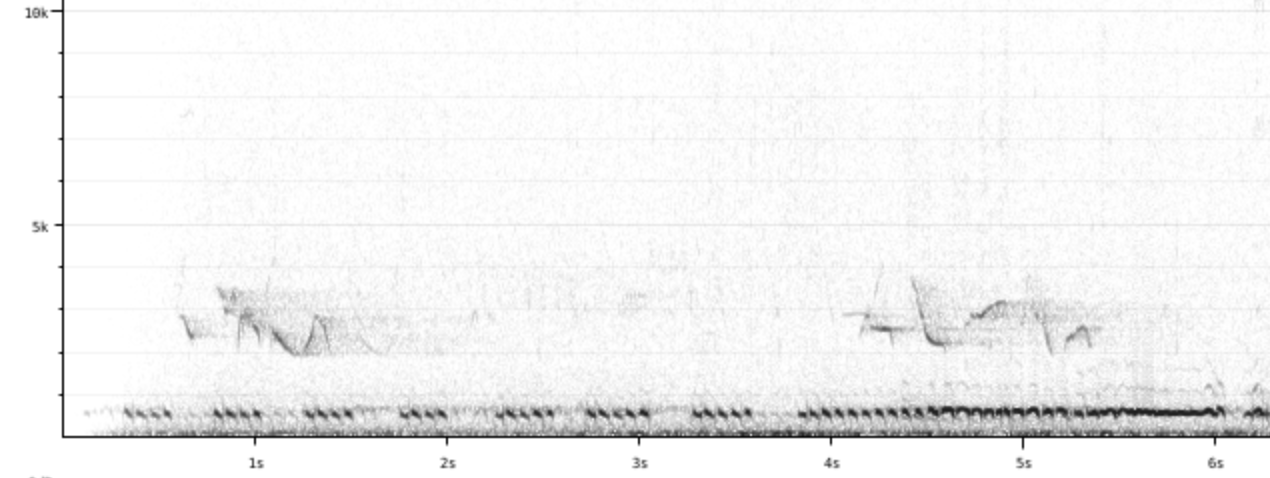
Details Wikipedia eBird Vogelwarte BirdLife ZH ornitho.ch bird-song.ch Xeno-Canto NABU
Hooded crow / Nebelkrähe (Corvus cornix)
Alternate classification: Corvus corone cornix

Hooded crow, Locarno Monti. 2020-06-16 18.19.00 Locarno
Classification: Genus Crows (Corvus); Family Corvidae
Von Linnaeus als eigener Genus erfasst, heute Unterart der Aaskrähe (neben Rabenkrähe).
Ich kenne sie aus dem Tessin, auch in der Ghisla Kunstsammlung.
Vocalization:
Song:
Calls:
Physical details: length=45-47 cm, wingspan=93-104 cm, weight=370-650 g
Habitats: Agricultural Call:
Call attributes: Call melody: non-musical, slow, Frequency: 2-4 KHz, Special sounds: cawing.
Details Wikipedia eBird Xeno-Canto BirdID NABU
Rook / Saatkrähe (Corvus frugilegus)
Classification: Genus Crows (Corvus); Family Corvidae
General:
Vocalization:
Song:
Physical details: length=44-46 cm, wingspan=81-99 cm, weight=280-340 g
Habitats: Agricultural Song: Gurgling and rattling, but mostly calls
Song attributes: Melody: non-musical, fast, Frequency: 0-3 KHz Special sounds: weird
Details Wikipedia eBird Vogelwarte BirdLife ZH ornitho.ch Xeno-Canto BirdID NABU
Ruff / Kampfläufer (Calidris pugnax)
Alternate classification: Philomachus pugnax
Also known as: Ruff_(bird)

Wikipedia: Ruff Source: OTHER 1200px-Philomachus_pugnax_-Diergaarde_Blijdorp-8c.jpg
Classification: Genus Calidris; Family Shorebirds (Scolopacidae)
This bird appears across the great seas in the following continents: Europe, North America, South America, Africa, Asia.
Etymology: Nabu: Der Name leitet sich vom Balzverhalten der Männchen ab: In Balzarenen tragen sie „Turniere“ aus, um die Weibchen zu beeindrucken, dabei herrscht eine komplizierte Rollenverteilung. [Link]
Vocalization:
Physical details: length=26-30 cm, wingspan=54-58 cm, weight=75-230 g
Habitats: Wetland Details Wikipedia eBird Vogelwarte BirdLife ZH ornitho.ch Audubon AllAboutBirds Xeno-Canto BirdID NABU
Icterine warbler / Gelbspötter (Hippolais icterina)
Alternate classification: Hippolais hippolais

Wikipedia: Icterine warbler Source: OTHER 1200px-Hippolais_icterina2.jpg
Classification: Genus Hippolais; Subfamily Acrocephalinae; Family Old world warblers (Sylviidae)
endangered Looking for it in Kaltbrunnenriet - didn't find it in June 2022.
Etymology:
Yellow belly, brown back, very similar to melodious warbler. Sometimes has the punky ruffled head feathers.
Appearance and identification: Ebird: Distinctive features include longish, daggerlike bill, long primary projection in the wings, and square tail. Told from similar Melodious Warbler by usually conspicuous pale wing panel, longer wings, and marginally shorter bill. Usually difficult to see when singing except during song flights, when long wings are apparent. Found in tall forest with oaks and birch, mixed forest, gardens, and parks. [Link]
Geography:
Song:
Calls:
Physical details: length=13 cm, wingspan=20-24 cm, weight=10-15 g
Habitats: Agricultural Song: Short bits 4-8 notes, sometimes with a little pause, overall a greenfinch feel. Some whoops, some chucks like a great tit, some bits like a house sparrow, even a meow. BirdLife Schweiz says full of vigor, includes some mis-tones and creaky calls; eBird says Song is fast, loud, and melodious with lots of mimicry.Can sing low (2k) or high (10k)
Song attributes: Melody: improvised melodic, fast, Frequency: 2-10 KHz Special sounds: mimicry
Details Wikipedia eBird Vogelwarte BirdLife ZH ornitho.ch bird-song.ch Xeno-Canto BirdID NABU
Common grasshopper warbler / Feldschwirl (Locustella naevia)
Also known as: Common grasshopper-warbler, Grasshopper warbler

Wikipedia: Common grasshopper warbler Source: OTHER Grashoppsangare-070512.jpg
Classification: Genus Locustella; Family Locustellidae
General:
Song:
Calls:
Physical details: length=12-13 cm, wingspan=15-19 cm, weight=11-16 g
Habitats: Wetland Song or calls similar to: Savi's warbler. Song: Buzzing like an insect or machinery. BirdLife Schweiz says like a grasshopper (which is after all the English name).
Song attributes: Melody: simple rhythmic, fast, Frequency: 5-8 KHz
Details Wikipedia eBird Vogelwarte BirdLife ZH ornitho.ch bird-song.ch Xeno-Canto BirdID NABU
Nightjar / Ziegenmelker (Caprimulgus europaeus)
Alternate classification: nightjar
Also known as: Eurasian nightjar, European nightjar

Wikipedia: Nightjar Source: OTHER 1200px-Great_Eared-Nightjar%2C_Tangkoko%2C_Sulawesi_%285799113025%29_%282%29.jpg
Classification: Genus Caprimulgus; Subfamily Caprimulginae; Family Caprimulgidae
General:
Song:
Calls:
Physical details: length=26-28 cm, wingspan=57-64 cm, weight=65-100 g
Habitats: Forest Song or calls similar to: Savi's warbler. Song: Buzzing like machinery or a (BirdID says) a cricket. Changes pitch at times.
Song attributes: Melody: simple rhythmic, fast, Frequency: 2-4 KHz
♫ Source: XENOCANTO XC768849 - European Nightjar - Caprimulgus europaeus - song.mp3 (song)

Details Wikipedia eBird Vogelwarte BirdLife ZH ornitho.ch bird-song.ch Xeno-Canto BirdID NABU
Red phalarope / Thorshühnchen (Phalaropus fulicarius)
Alternate classification: Phalaropus fulicaria
Also known as: Grey phalarope

Wikipedia: Red phalarope Source: OTHER 1200px-Phalaropus_fulicarius_10.jpg
Classification: Genus Phalaropus; Family Shorebirds (Scolopacidae)
This bird appears across the great seas in the following continents: Europe, North America, South America, Africa.
General:
Calls:
Physical details: length=20-22 cm, wingspan=40-44 cm, weight=40-75 g
Details Wikipedia eBird Vogelwarte BirdLife ZH ornitho.ch Audubon AllAboutBirds Xeno-Canto BirdID NABU
Great snipe / Doppelschnepfe (Gallinago media)

Wikipedia: Great snipe Source: OTHER Greatsnipe_1000.jpg
Classification: Genus Gallinago; Family Shorebirds (Scolopacidae)
General:
Vocalization:
Calls:
Physical details: length=27-29 cm, wingspan=47-50 cm, weight=150-225 g
Details Wikipedia eBird Vogelwarte BirdLife ZH ornitho.ch Xeno-Canto BirdID NABU
Corn crake / Wachtelkönig (Crex crex)
Also known as: Grass quail, Corncrake
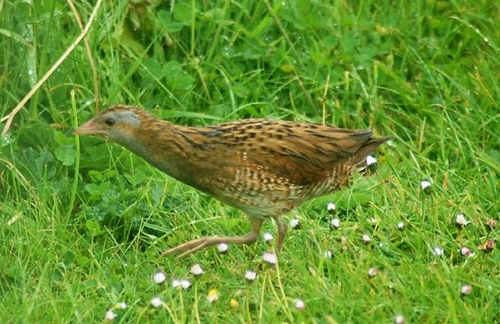
Wikipedia: Corn crake Source: OTHER Corncrake2.jpg
Classification: Genus Crex; Family Rails (Rallidae)
General:
Song:
Physical details: length=27-30 cm, wingspan=46-53 cm, weight=120-200 g
Habitats: Agricultural Details Wikipedia eBird Vogelwarte BirdLife ZH ornitho.ch Xeno-Canto BirdID NABU
Red-throated pipit / Rotkehlpieper (Anthus cervinus)
Alternate classification: Motacilla cervina

Wikipedia: Red-throated pipit Source: OTHER 1200px-Red-throated_Pipit.jpg
Classification: Genus Anthus; Family Motacillidae
This bird appears across the great seas in the following continents: Europe, North America, Africa, Asia.
General:
Details Wikipedia eBird Vogelwarte BirdLife ZH ornitho.ch Audubon AllAboutBirds Xeno-Canto NABU
Pomarine jaeger / Spatelraubmöwe (Stercorarius pomarinus)
Also known as: Pomarine skua
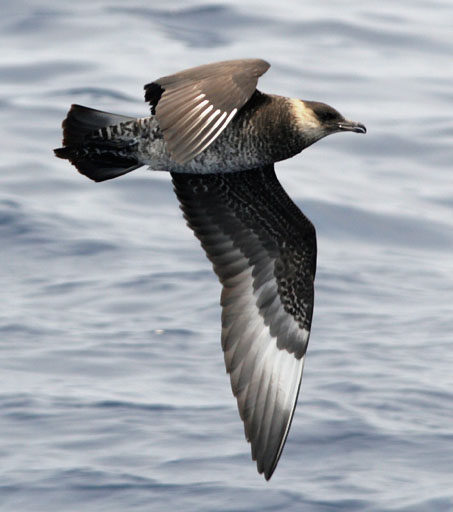
Wikipedia: Pomarine jaeger Source: OTHER Stercorarius_pomarinusPCCA20070623-3985B.jpg
Classification: Genus Stercorarius; Family Stercorariidae
This bird appears across the great seas in the following continents: Europe, North America, South America, Africa, Asia.
Calls:
Physical details: length=46-51 cm, wingspan=125-138 cm, weight=600-900 g
Details Wikipedia eBird Vogelwarte BirdLife ZH ornitho.ch Audubon AllAboutBirds Xeno-Canto BirdID NABU
Black-tailed godwit / Uferschnepfe (Limosa limosa)
Alternate classification: Scolopax limosa
Also known as: Uferschnepfe
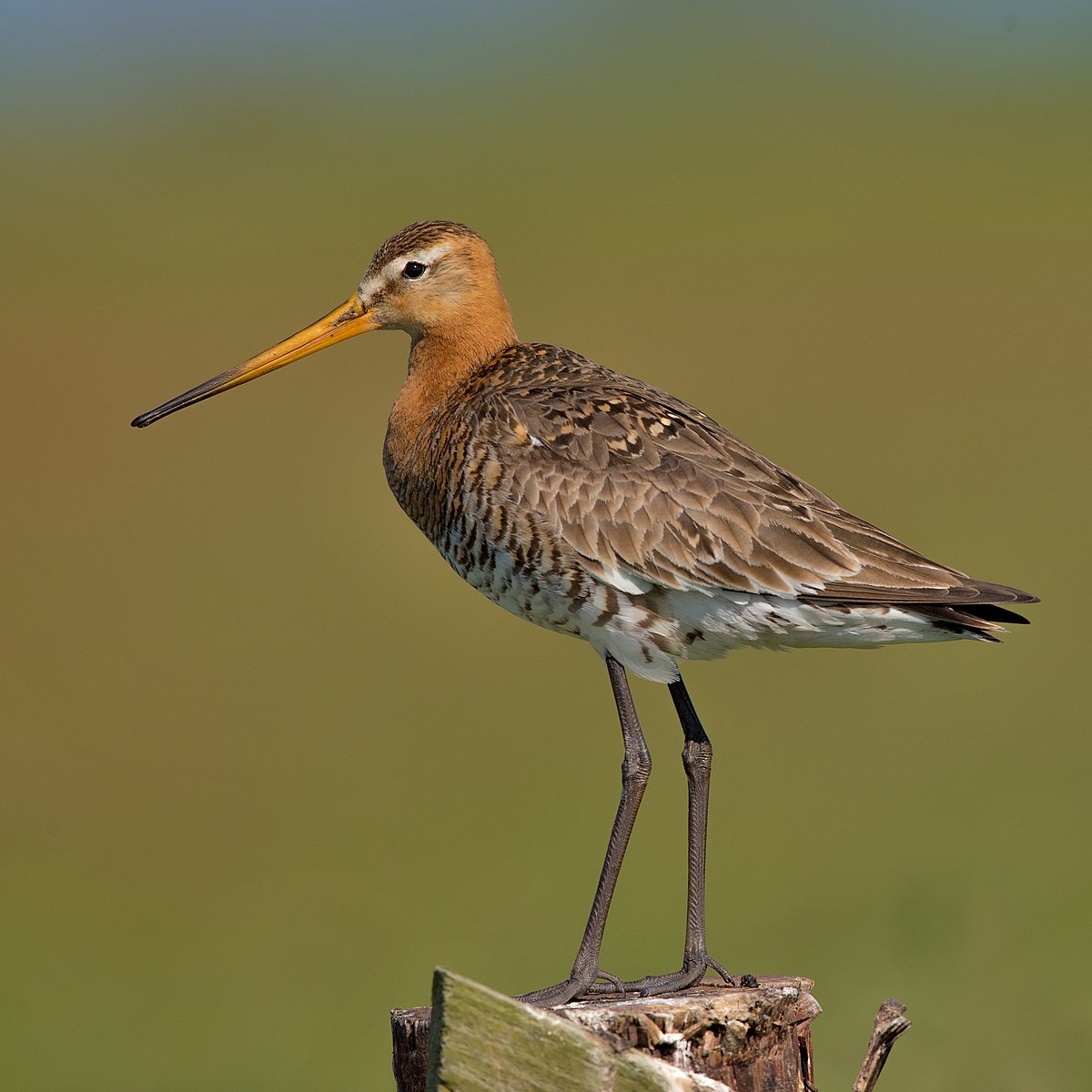
Wikipedia: Black-tailed godwit Source: OTHER 1200px-Black-tailed_Godwit_Uferschnepfe.jpg
Classification: Genus Limosa; Family Shorebirds (Scolopacidae)
This bird appears across the great seas in the following continents: Europe, North America, Africa, Asia.
General:
Habitats: Wetland Details Wikipedia eBird Vogelwarte BirdLife ZH ornitho.ch Audubon AllAboutBirds Xeno-Canto NABU
Red-footed falcon / Rotfussfalke (Falco vespertinus)

Wikipedia: Red-footed falcon Source: OTHER Falco_vespertinus_3_%28Martin_Mecnarowski%29.jpg
Classification: Genus Falcons (Falco); Family Falconidae
Habitats: Agricultural Details Wikipedia eBird Vogelwarte BirdLife ZH ornitho.ch Xeno-Canto NABU
Temminck's stint / Temminckstrandläufer (Calidris temminckii)

Wikipedia: Temminck's stint Source: OTHER 1200px-Temmincks_Stint.jpg
Classification: Genus Calidris; Family Shorebirds (Scolopacidae)
Habitats: Wetland Details Wikipedia eBird Vogelwarte BirdLife ZH ornitho.ch Xeno-Canto NABU
Caspian tern / Raubseeschwalbe (Hydroprogne caspia)
Alternate classification: Sterna caspia
Also known as: Raubseeschwalbe, Taranui

Wikipedia: Caspian tern Source: OTHER 1200px-Sterna-caspia-010.jpg
Classification: Genus Hydroprogne; Family Gulls (Laridae)
This bird appears across the great seas in the following continents: Europe, North America, South America, Africa, Asia.
Calls:
Physical details: length=47-54 cm, wingspan=130-145 cm, weight=500-750 g
Habitats: River and lake Details Wikipedia eBird Vogelwarte BirdLife ZH ornitho.ch Audubon AllAboutBirds Xeno-Canto BirdID NABU
European honey-buzzard / Wespenbussard (Pernis apivorus)
Also known as: European honey buzzard

Wikipedia: European honey-buzzard Source: OTHER 1200px-Wespenbussard_European_honey_buzzard_Pernis_apivorus%2C_crop.jpg
Classification: Genus Pernis; Subfamily True hawks (Accipitrinae); Family Accipitridae
General:
Calls:
Physical details: length=52-60 cm, wingspan=135-150 cm, weight=360-1050 g
Habitats: Agricultural Details Wikipedia eBird Vogelwarte BirdLife ZH ornitho.ch Xeno-Canto BirdID NABU
Long-tailed jaeger / Falkenraubmöwe (Stercorarius longicaudus)
Alternate classification: Stercorarius longicauda
Also known as: Long-tailed skua, Longtailed skua

Wikipedia: Long-tailed jaeger Source: OTHER 1200px-Long-tailed_Skua_%28js%29_26.jpg
Classification: Genus Stercorarius; Family Stercorariidae
This bird appears across the great seas in the following continents: Europe, North America, Africa, Asia.
General:
Details Wikipedia eBird Vogelwarte BirdLife ZH ornitho.ch Audubon AllAboutBirds Xeno-Canto NABU
Common stonechat / Afrikanische Schwarzkehlchen (Saxicola torquatus)
Alternate classification: Saxicola torquata
Also known as: African stonechat, European stonechat
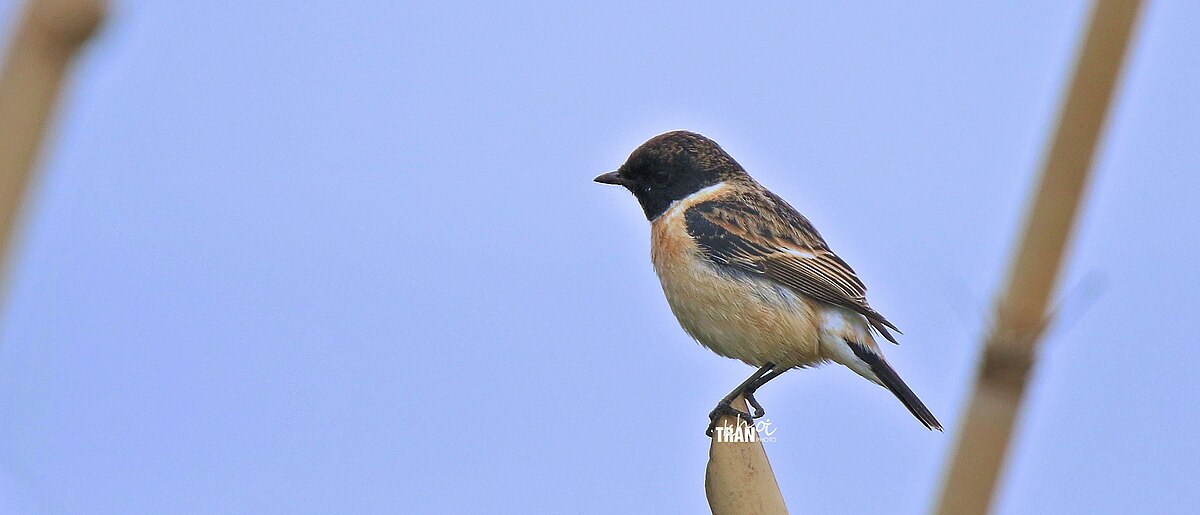
Wikipedia: Common stonechat Source: OTHER 1200px-Saxicola_stejnegeri%2C_Hanoi%2C_Vietnam_4G4A3231.jpg
Classification: Genus Saxicola; Family Old world flycatchers (Muscicapidae)
Song: Automatically generated from Xeno-Canto recording
Song attributes: Frequency:
♫ XC710467 - European Stonechat - Saxicola rubicola rubicola. Source: XENOCANTO XC710467 - European Stonechat - Saxicola rubicola rubicola.mp3 (song)
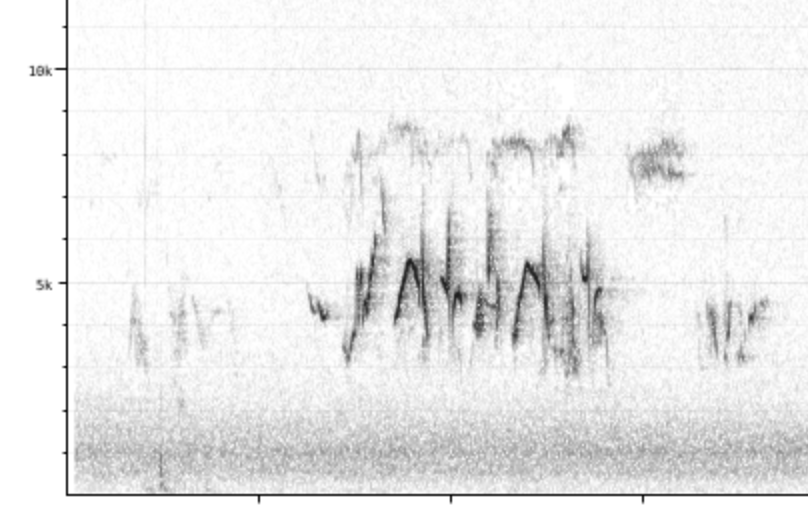
Details Wikipedia eBird Vogelwarte BirdLife ZH ornitho.ch Xeno-Canto NABU
Black-legged kittiwake / Dreizehenmöwe (Rissa tridactyla)

Wikipedia: Black-legged kittiwake Source: OTHER 1200px-Rissa_tridactyla_%28Vard%C3%B8%2C_2012%29.jpg
Classification: Genus Rissa; Family Gulls (Laridae)
This bird appears across the great seas in the following continents: Europe, North America, Africa.
Vocalization:
Physical details: length=38-40 cm, wingspan=95-105 cm, weight=310-500 g
Details Wikipedia eBird Vogelwarte BirdLife ZH ornitho.ch Audubon AllAboutBirds Xeno-Canto BirdID NABU
European roller / Blauracke (Coracias garrulus)
Also known as: Blauracke

Wikipedia: European roller Source: OTHER 1200px-Arrival_%2847961559816%29.jpg
Classification: Genus Coracias; Family Coraciidae
General:
Vocalization:
Physical details: length=30-32 cm, wingspan=66-73 cm, weight=120-160 g
Details Wikipedia eBird Vogelwarte BirdLife ZH ornitho.ch Xeno-Canto BirdID NABU
Squacco heron / Rallenreiher (Ardeola ralloides)
Alternate classification: Ardea ralloides
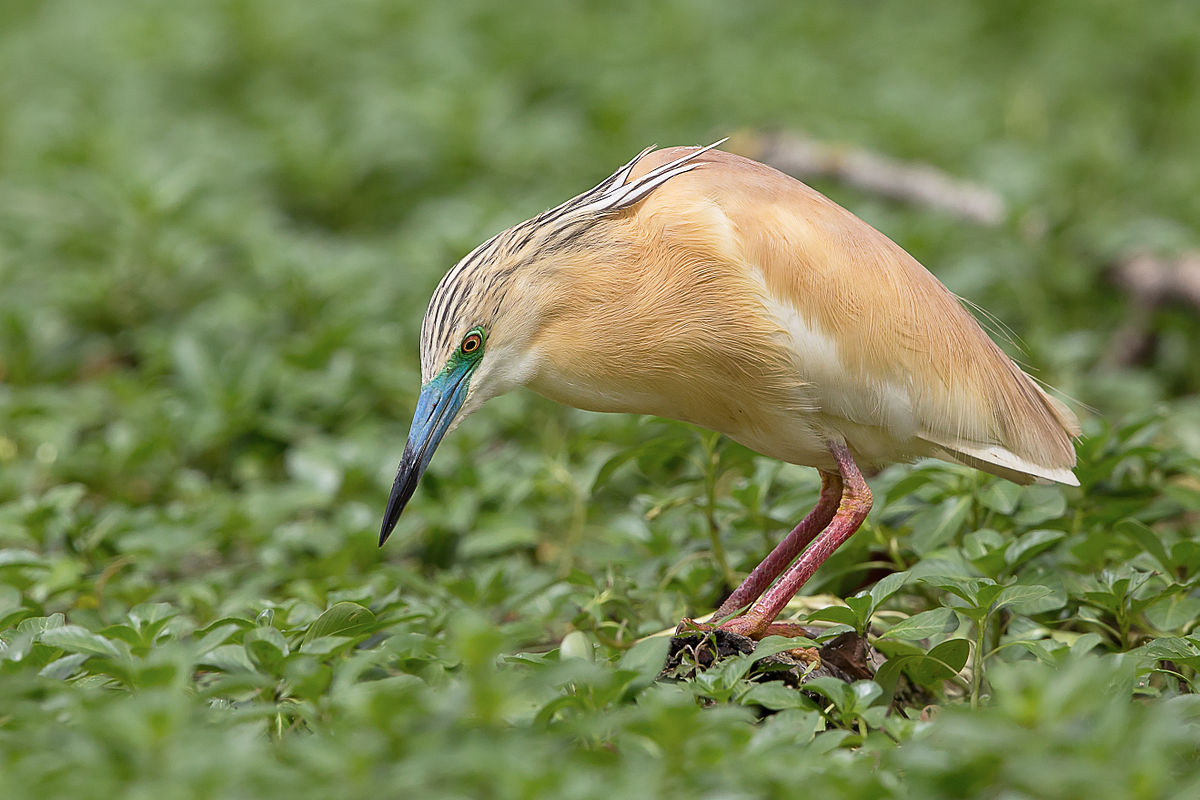
Wikipedia: Squacco heron Source: OTHER 1200px-Crabier_chevelu.jpg
Classification: Genus Ardeola; Family Herons (Ardeidae)
General:
Habitats: Wetland Details Wikipedia eBird Vogelwarte BirdLife ZH ornitho.ch Xeno-Canto NABU
Black-crowned night-heron / Nachtreiher (Nycticorax nycticorax)
Also known as: Black-crowned night heron

Wikipedia: Black-crowned night-heron Source: OTHER 1200px-BCNH_CMCNJ_for_Wiki.png
Classification: Genus Night herons (Nycticorax); Family Herons (Ardeidae)
This bird appears across the great seas in the following continents: Europe, North America, South America, Africa, Asia.
Calls:
Physical details: length=58-65 cm, wingspan=105-112 cm, weight=500-800 g
Habitats: Wetland Details Wikipedia eBird Vogelwarte BirdLife ZH ornitho.ch Audubon AllAboutBirds Xeno-Canto BirdID NABU
Eurasian hobby / Baumfalke (Falco subbuteo)
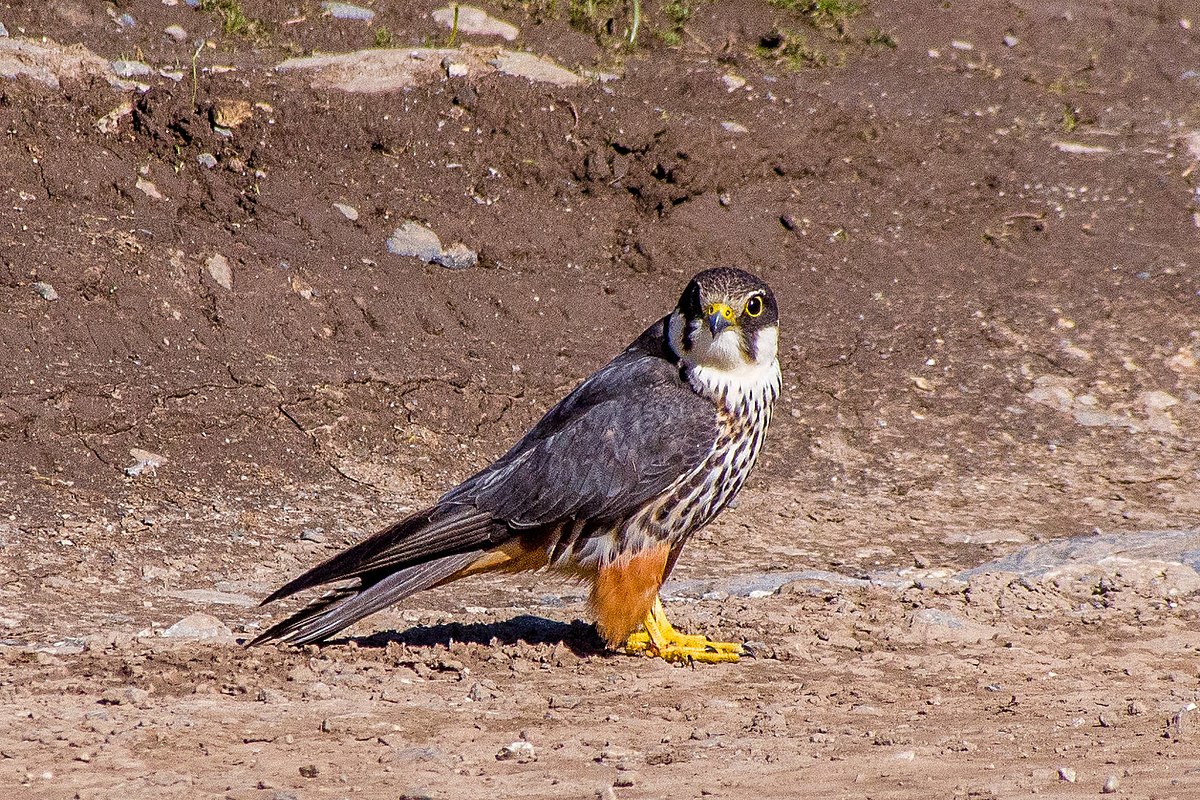
Wikipedia: Eurasian hobby Source: OTHER 1200px-Eurasian_Hobby_%2814574008925%29_%28cropped%29.jpg
Classification: Genus Falcons (Falco); Family Falconidae
General:
Vocalization:
Calls:
Physical details: length=30-36 cm, wingspan=82-92 cm, weight=131-340 g
Habitats: Agricultural Song: Automatically generated from Xeno-Canto recording
Song attributes: Frequency:
♫ Source: BirdNet 20200507_131403 birdnet 488 BirdNet guesses eurasian hobby or eurasian jay - No confident detection.mp3 2020-05-07 13.14.03 Hungerseeli (song)
Details Wikipedia eBird Vogelwarte BirdLife ZH ornitho.ch Xeno-Canto BirdID NABU
Dunlin / Alpenstrandläufer (Calidris alpina)
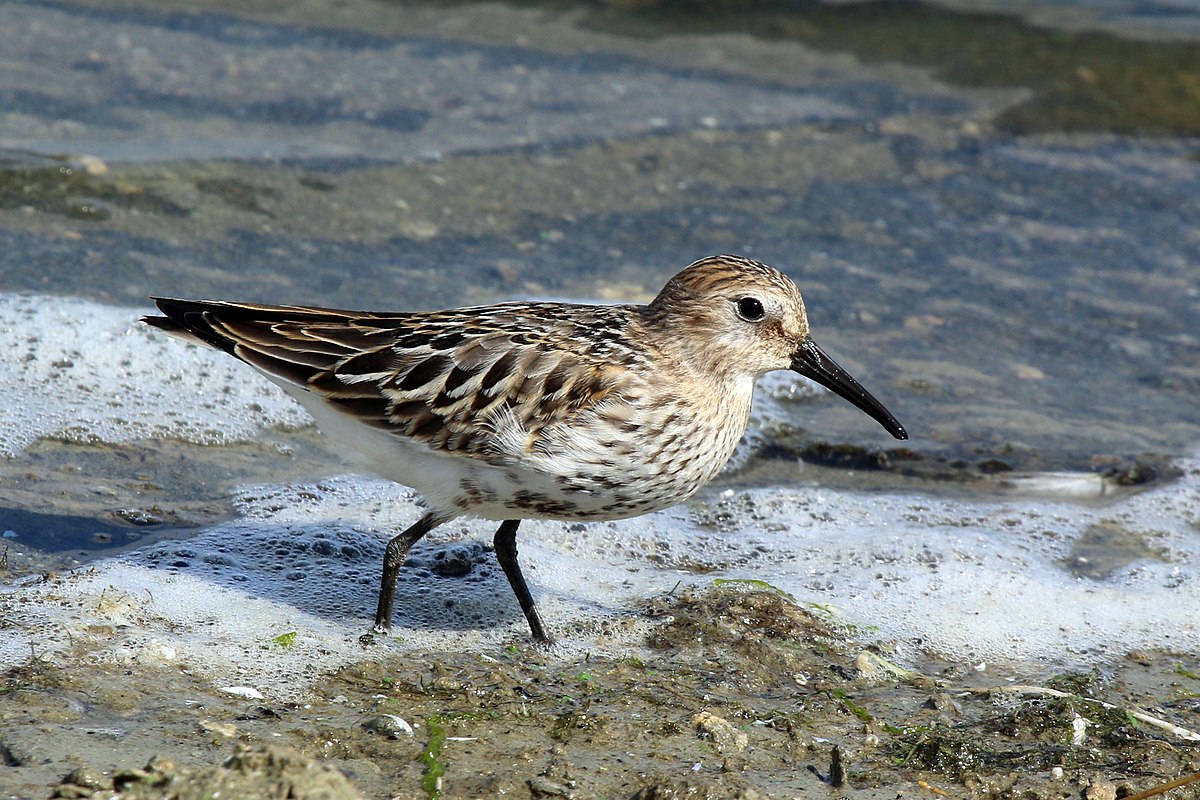
Wikipedia: Dunlin Source: OTHER 1200px-Dunlin_%28Calidris_alpina%29_juvenile.jpg
Classification: Genus Calidris; Family Shorebirds (Scolopacidae)
This bird appears across the great seas in the following continents: Europe, North America, South America, Africa.
General:
Song:
Calls:
Physical details: length=16-20 cm, wingspan=38-43 cm, weight=35-60 g
Habitats: Wetland Details Wikipedia eBird Vogelwarte BirdLife ZH ornitho.ch Audubon AllAboutBirds Xeno-Canto BirdID NABU
White-winged tern / Weissflügelseeschwalbe (Chlidonias leucopterus)
Alternate classification: Chliodonias leucopterus
Also known as: Weissflügel-Seeschwalbe

Wikipedia: White-winged tern Source: OTHER Chlidonias_leucopterus_Mai_Po.jpg
Classification: Genus Chlidonias; Family Gulls (Laridae)
General:
Habitats: River and lake Details Wikipedia eBird Vogelwarte BirdLife ZH ornitho.ch Xeno-Canto NABU
Arctic tern / Kü̈stenseeschwalbe (Sterna paradisaea)
Also known as: Küstenseeschwalbe
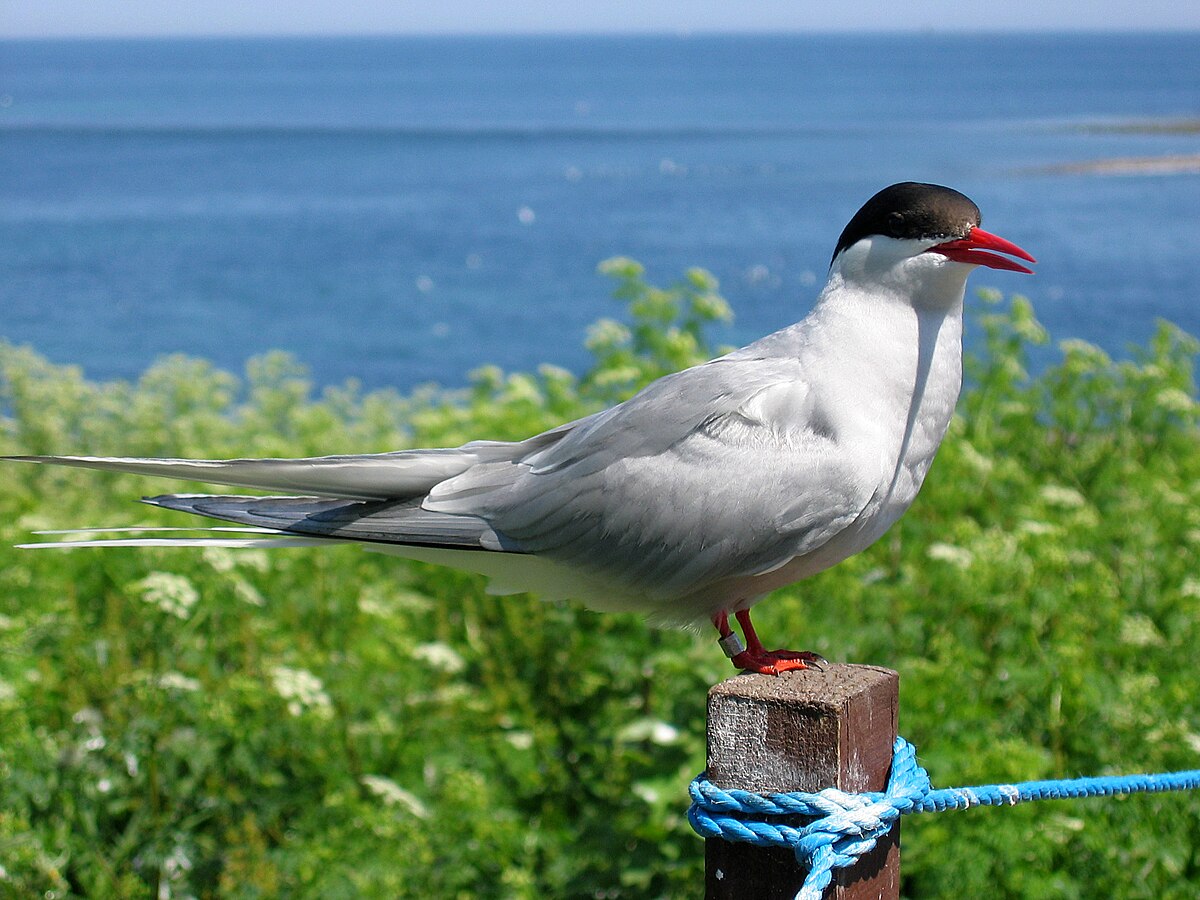
Wikipedia: Arctic tern Source: OTHER 1200px-2009_07_02_-_Arctic_tern_on_Farne_Islands_-_The_blue_rope_demarcates_the_visitors%27_path.JPG
Classification: Genus Sterna; Subfamily Terns (Sterninae); Order Shorebirds and others (Charadriiformes); Class Birds (aves); Subphylum Vertebrata; Phylum Chordate (Chordata); Kingdom Animal (Animalia); Domain Eukaryota
This bird appears across the great seas in the following continents: Europe, North America, South America, Africa.
Vocalization:
Calls:
Physical details: length=33-35 cm, wingspan=75-85 cm, weight=95-120 g
Details Wikipedia eBird Vogelwarte BirdLife ZH ornitho.ch Audubon AllAboutBirds Xeno-Canto BirdID NABU
Common quail / Wachtel (Coturnix coturnix)

Wikipedia: Common quail Source: OTHER 1200px-A_common_quail_in_Lebanon.jpg
Classification: Genus Coturnix; Subfamily Perdicinae; Family Turkeys (Phasianidae)
General:
Vocalization:
Song:
Physical details: length=16-18 cm, wingspan=32-35 cm, weight=75-135 g
Habitats: Agricultural Details Wikipedia eBird Vogelwarte BirdLife ZH ornitho.ch bird-song.ch Xeno-Canto BirdID NABU
Marsh sandpiper / Teichwasserläufer (Tringa stagnatilis)

Wikipedia: Marsh sandpiper Source: OTHER 1200px-Tringa_stagnatilis_2_-_Laem_Pak_Bia.jpg
Classification: Genus Tringa; Family Shorebirds (Scolopacidae)
General:
Song:
Calls:
Physical details: length=22-24 cm, wingspan=55-59 cm, weight=50-85 g
Details Wikipedia eBird Vogelwarte BirdLife ZH ornitho.ch Xeno-Canto BirdID NABU
Gull-billed tern / Lachseeschwalbe (Gelochelidon nilotica)
Alternate classification: Sterna nilotica
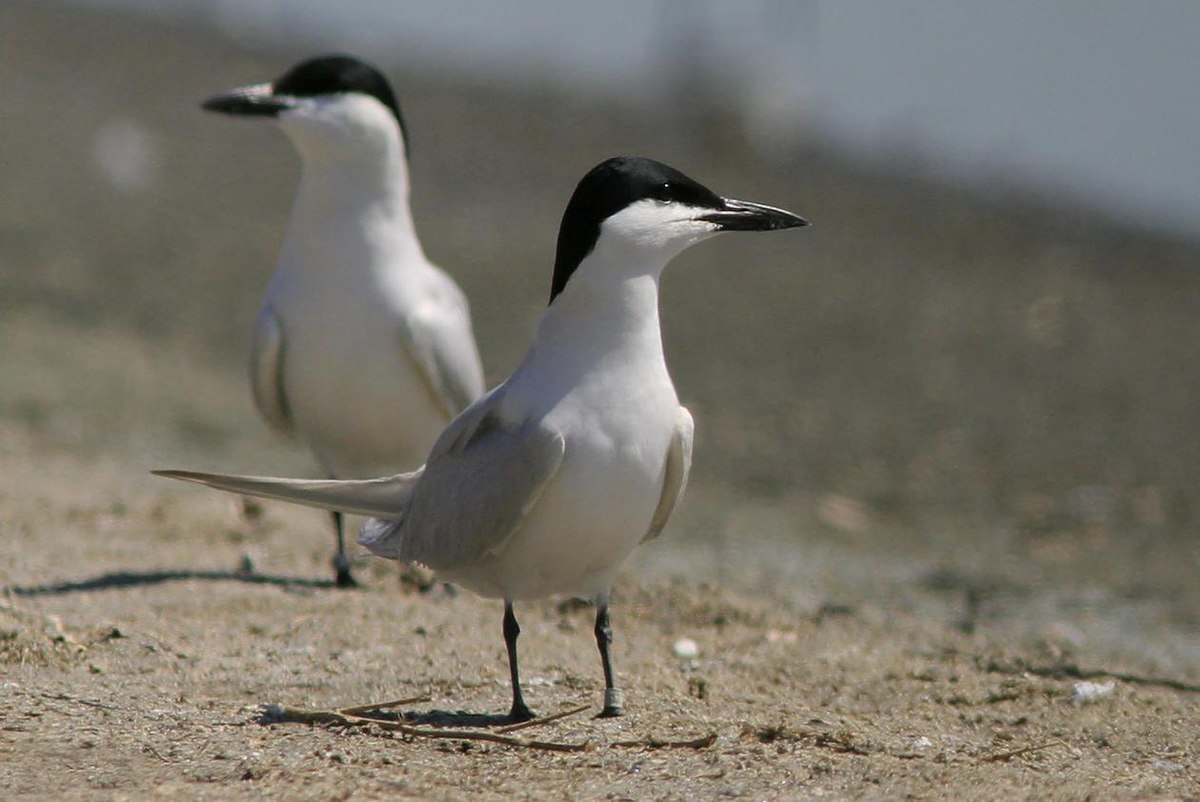
Wikipedia: Gull-billed tern Source: OTHER 1200px-Gelochelidon_nilotica_vanrossemi.jpg
Classification: Genus Gelochelidon; Family Gulls (Laridae)
This bird appears across the great seas in the following continents: Europe, North America, South America, Africa, Asia.
General:
Details Wikipedia eBird Vogelwarte BirdLife ZH ornitho.ch Audubon AllAboutBirds Xeno-Canto NABU
Black tern / Trauerseeschwalbe (Chlidonias niger)

Wikipedia: Black tern Source: OTHER 1200px-%C4%8Cor%C3%ADk_%C4%8Dierny_%28Chlidonias_niger%29_a_%284644831482%29.jpg
Classification: Genus Chlidonias; Family Gulls (Laridae)
This bird appears across the great seas in the following continents: Europe, North America, South America, Africa.
Vocalization:
Calls:
Physical details: length=22-24 cm, wingspan=64-68 cm, weight=60-86 g
Habitats: River and lake Details Wikipedia eBird Vogelwarte BirdLife ZH ornitho.ch Audubon AllAboutBirds Xeno-Canto BirdID NABU
Little stint / Zwergstrandläufer (Calidris minuta)

Wikipedia: Little stint Source: OTHER Little_Stint_%28Calidris_minuta%29_2.jpg
Classification: Genus Calidris; Family Shorebirds (Scolopacidae)
General:
Song:
Calls:
Physical details: length=12-14 cm, wingspan=34-37 cm, weight=18-30 g
Habitats: Wetland Details Wikipedia eBird Vogelwarte BirdLife ZH ornitho.ch Xeno-Canto BirdID NABU
Little crake / Kleinsumpfhuhn (Zapornia parva)
Alternate classification: Porzana parva
Also known as: Kleines Sumpfhuhn, Kleinralle
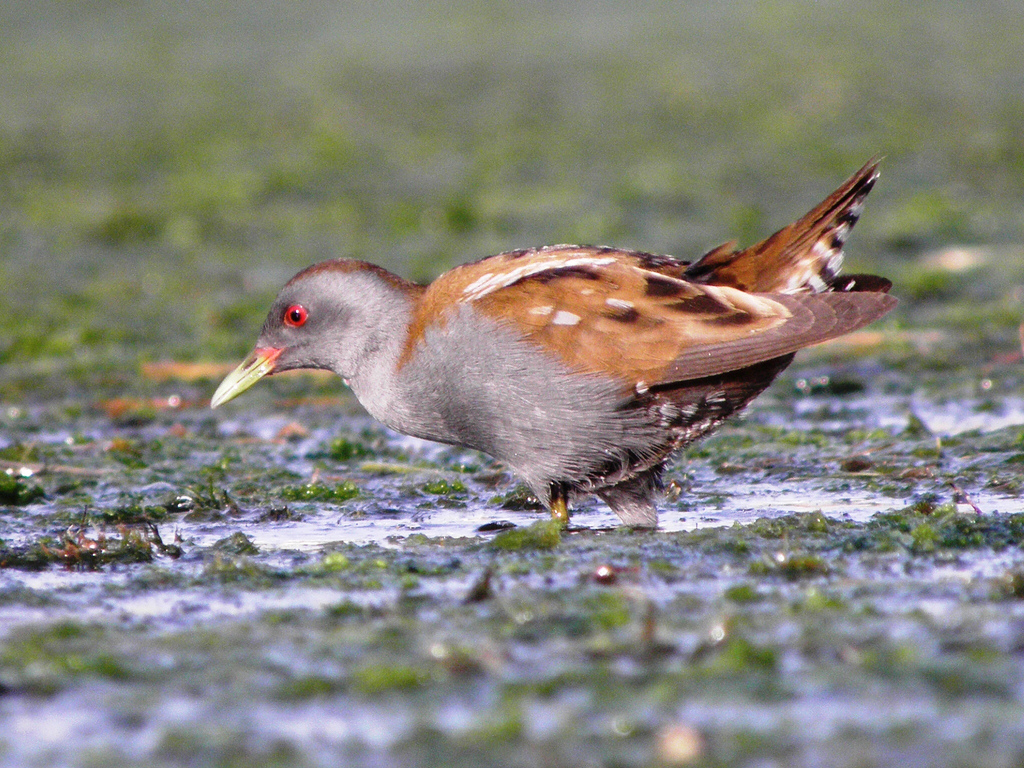
Wikipedia: Little crake Source: OTHER Porzana_parva_%2850%29.jpg
Classification: Genus Porzana; Family Rails (Rallidae)
General:
Song:
Calls:
Physical details: length=18-20 cm, wingspan=34-39 cm, weight=40-60 g
Habitats: Wetland Details Wikipedia eBird Vogelwarte BirdLife ZH ornitho.ch Xeno-Canto BirdID NABU
Pallid harrier / Steppenweihe (Circus macrourus)

Wikipedia: Pallid harrier Source: OTHER 1200px-Pallid_Harrier_Male.jpg
Classification: Genus Harriers (Circus); Subfamily True hawks (Accipitrinae); Family Accipitridae
General:
Calls:
Physical details: length=40-48 cm, wingspan=95-120 cm, weight=300-550 g
Details Wikipedia eBird Vogelwarte BirdLife ZH ornitho.ch Xeno-Canto BirdID NABU
Barn owl / Schleiereule (Tyto alba)
Alternate classification: Strix alba
Also known as: Schleiereule, Western barn owl, Common barn owl

Wikipedia: Barn owl Source: OTHER 1200px-Tyto_alba_-British_Wildlife_Centre%2C_Surrey%2C_England-8a_%281%29.jpg
Classification: Genus Tyto; Family Barn owls (Tytonidae)
This bird appears across the great seas in the following continents: Europe, North America, South America, Africa, Asia.
General:
Vocalization:
Song:
Physical details: length=33-35 cm, wingspan=80-95 cm, weight=240-350 g
Habitats: Agricultural Details Wikipedia eBird A-Z Animals Vogelwarte BirdLife ZH ornitho.ch bird-song.ch Audubon AllAboutBirds Xeno-Canto BirdID NABU
Peregrine falcon / Wanderfalke (Falco peregrinus)
Also known as: Peregrine, Wanderfalke

Wikipedia: Peregrine falcon Source: OTHER Falco_peregrinus_good_-_Christopher_Watson.jpg
Classification: Genus Falcons (Falco); Family Falconidae
This bird appears across the great seas in the following continents: Europe, North America, South America, Africa, Asia.
General:
Vocalization:
Calls:
Physical details: length=36-48 cm, wingspan=95-110 cm, weight=582-1300 g
Habitats: Agricultural Details Wikipedia eBird A-Z Animals Vogelwarte BirdLife ZH ornitho.ch Audubon AllAboutBirds Xeno-Canto BirdID NABU
Spotted crake / Tüpfelsumpfhuhn (Porzana porzana)

Wikipedia: Spotted crake Source: OTHER Porzana_porzana_6_%28Marek_Szczepanek%29.jpg
Classification: Genus Porzana; Family Rails (Rallidae)
General:
Song:
Calls:
Physical details: length=22-24 cm, wingspan=37-42 cm, weight=70-110 g
Habitats: Wetland Details Wikipedia eBird Vogelwarte BirdLife ZH ornitho.ch Xeno-Canto BirdID NABU
Bearded vulture / Bartgeier (Gypaetus barbatus)
Also known as: Lämmergeier

Wikipedia: Bearded vulture Source: OTHER 1200px-Bartgeier_Gypaetus_barbatus_front_Richard_Bartz.jpg
Classification: Genus Gypaetus; Subfamily True hawks (Accipitrinae); Family Accipitridae
General:
Calls:
Physical details: length=100-115 cm, wingspan=266-282 cm, weight=5000-7000 g
Habitats: Agricultural Details Wikipedia eBird Vogelwarte BirdLife ZH ornitho.ch Xeno-Canto BirdID NABU
Montagu's harrier / Wiesenweihe (Circus pygargus)
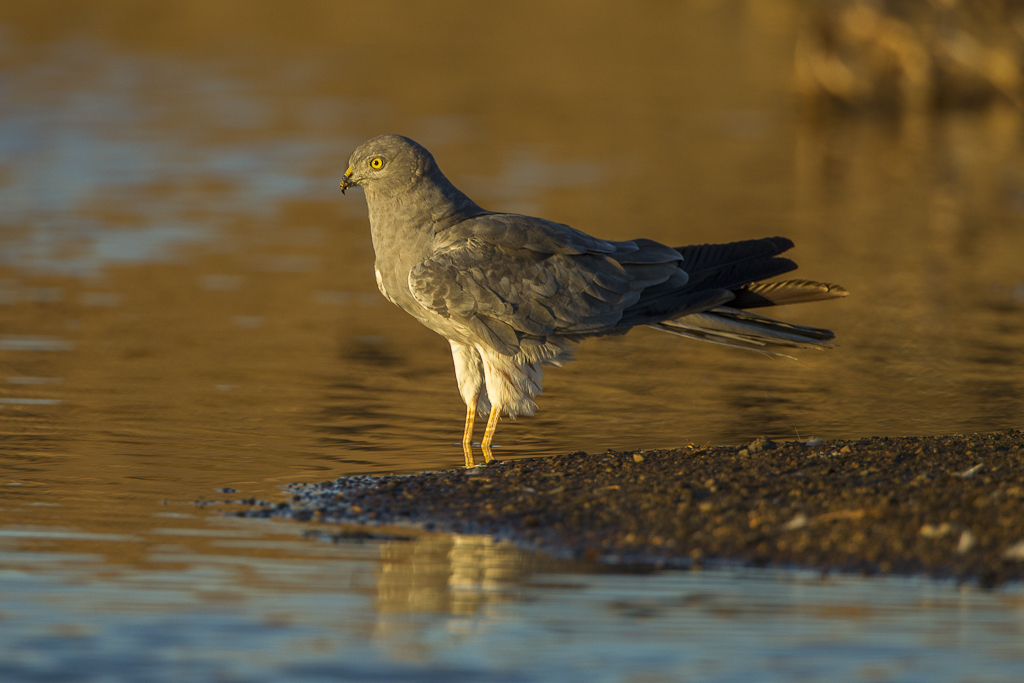
Wikipedia: Montagu's harrier Source: OTHER Montagu%27s_harrier_%28Circus_pygargus%29.jpg
Classification: Genus Harriers (Circus); Subfamily True hawks (Accipitrinae); Family Accipitridae
General:
Habitats: Agricultural Details Wikipedia eBird Vogelwarte BirdLife ZH ornitho.ch Xeno-Canto NABU
Booted eagle / Zwergadler (Hieraaetus pennatus)
Alternate classification: Aquila pennata
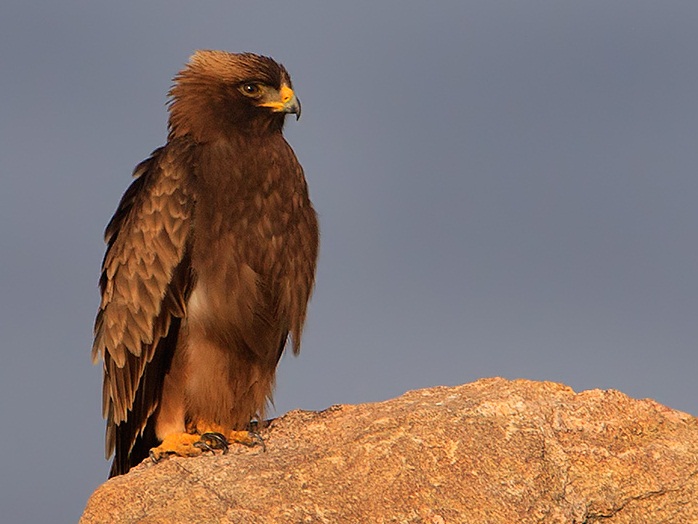
Wikipedia: Booted eagle Source: OTHER MH_Booted.jpg
Classification: Genus Hieraaetus; Subfamily True hawks (Accipitrinae); Family Accipitridae
Vocalization:
Physical details: length=45-53 cm, wingspan=100-121 cm, weight=510-1250 g
Details Wikipedia eBird Vogelwarte BirdLife ZH ornitho.ch Xeno-Canto BirdID NABU
Lesser redpoll / Alpenbirkenzeisig (Acanthis cabaret)
Alternate classification: Acanthis flammea cabaret, Fringilla cabaret, Carduelis cabaret

Wikipedia: Lesser redpoll Source: OTHER Carduelis_cabaret1.jpg
Classification: Genus Redpolls (Acanthis); Subfamily Carduelinae; Family Fringillidae
introduced
Details Wikipedia eBird Vogelwarte BirdLife ZH ornitho.ch Xeno-Canto NABU
European golden-plover / Goldregenpfeifer (Pluvialis apricaria)
Also known as: European golden plover, Eurasian golden plover

Wikipedia: European golden-plover Source: OTHER 1200px-Kul%C3%ADk_zlat%C3%BD_%28Pluvialis_apricaria%29_a_%283949776435%29.jpg
Classification: Genus Pluvialis; Family Charadriidae
General:
Song:
Calls:
Physical details: length=26-29 cm, wingspan=67-76 cm, weight=160-280 g
Habitats: Wetland Details Wikipedia eBird Vogelwarte BirdLife ZH ornitho.ch Xeno-Canto BirdID NABU
Red-rumped swallow / Rötelschwalbe (Cecropis daurica)
Alternate classification: Hirundo daurica

Wikipedia: Red-rumped swallow Source: OTHER Red-rumped_Swallow_%28Cecropis_daurica%29_Photograph_by_Shantanu_Kuveskar.jpg
Classification: Genus Cecropis; Family Swallows (Hirundinidae)
General:
Details Wikipedia eBird Vogelwarte BirdLife ZH ornitho.ch Xeno-Canto NABU
Red-throated loon / Sterntaucher (Gavia stellata)
Also known as: Red-throated diver

Wikipedia: Red-throated loon Source: OTHER 1200px-Gavia_Stellata_%C3%96lfus%C3%A1_20090606.jpg
Classification: Genus Gavia; Family Loons (Gaviidae)
This bird appears across the great seas in the following continents: Europe, North America.
Deutschland: Zugvogel, Wintergast
Habitats: River and lake Details Wikipedia eBird Vogelwarte BirdLife ZH ornitho.ch Audubon AllAboutBirds Xeno-Canto NABU
Short-eared owl / Sumpfohreule (Asio flammeus)
Alternate classification: Strix flammea

Wikipedia: Short-eared owl Source: OTHER 1200px-Hibou_des_marais.jpg
Classification: Genus Asio; Family Strigidae
This bird appears across the great seas in the following continents: Europe, North America, South America, Africa, Asia.
Deutschland: Brut-, Zugvogel, Wintergast RL 1
Habitats: Wetland Details Wikipedia eBird A-Z Animals Vogelwarte BirdLife ZH ornitho.ch Audubon AllAboutBirds Xeno-Canto NABU
Eurasian woodcock / Waldschnepfe (Scolopax rusticola)

Wikipedia: Eurasian woodcock Source: OTHER Scolopax_rusticola.jpg
Classification: Genus Scolopax; Family Shorebirds (Scolopacidae)
Deutschland: Brut-, Jahres-, Zugvogel, Wintergast RL V
Vocalization:
Calls:
Physical details: length=33-35 cm, wingspan=56-60 cm, weight=131-420 g
Habitats: Forest Details Wikipedia eBird Vogelwarte BirdLife ZH ornitho.ch bird-song.ch Xeno-Canto BirdID NABU
Caspian gull / Steppenmöwe (Larus cachinnans)
Alternate classification: Larus argentatus cachinnans

Wikipedia: Caspian gull Source: OTHER Larus_cachinnans_3_%28Marek_Szczepanek%29.jpg
Classification: Genus Larus; Subfamily Larinae; Family Gulls (Laridae)
Deutschland: Brut-, Zugvogel, Wintergast RL R
Habitats: River and lake Details Wikipedia eBird Vogelwarte BirdLife ZH ornitho.ch Xeno-Canto NABU
Long-eared owl / Waldohreule (Asio otus)
Alternate classification: Strix otus

Wikipedia: Long-eared owl Source: OTHER Waldohreule_in_freier_Wildbahn.jpg
Classification: Genus Asio; Family Strigidae
This bird appears across the great seas in the following continents: Europe, North America, Africa.
Deutschland: Brut-, Jahres-, Zugvogel, Wintergast
Habitats: Agricultural Details Wikipedia eBird A-Z Animals Vogelwarte BirdLife ZH ornitho.ch bird-song.ch Audubon AllAboutBirds Xeno-Canto NABU
Grey partridge / Rebhuhn (Perdix perdix)
Also known as: Gray partridge, Rebhuhn

Wikipedia: Grey partridge Source: OTHER 1200px-Nurmkanad.jpg
Classification: Genus Perdix; Subfamily Perdicinae; Family Turkeys (Phasianidae)
This bird appears across the great seas in the following continents: Europe, North America.
Deutschland: Brut-, Jahresvogel RL 2
Vocalization:
Song:
Physical details: length=29-31 cm, wingspan=45-48 cm, weight=340-450 g
Habitats: Agricultural Details Wikipedia eBird Vogelwarte BirdLife ZH ornitho.ch Audubon AllAboutBirds Xeno-Canto BirdID NABU
Rock ptarmigan / Alpenschneehuhn (Lagopus muta)
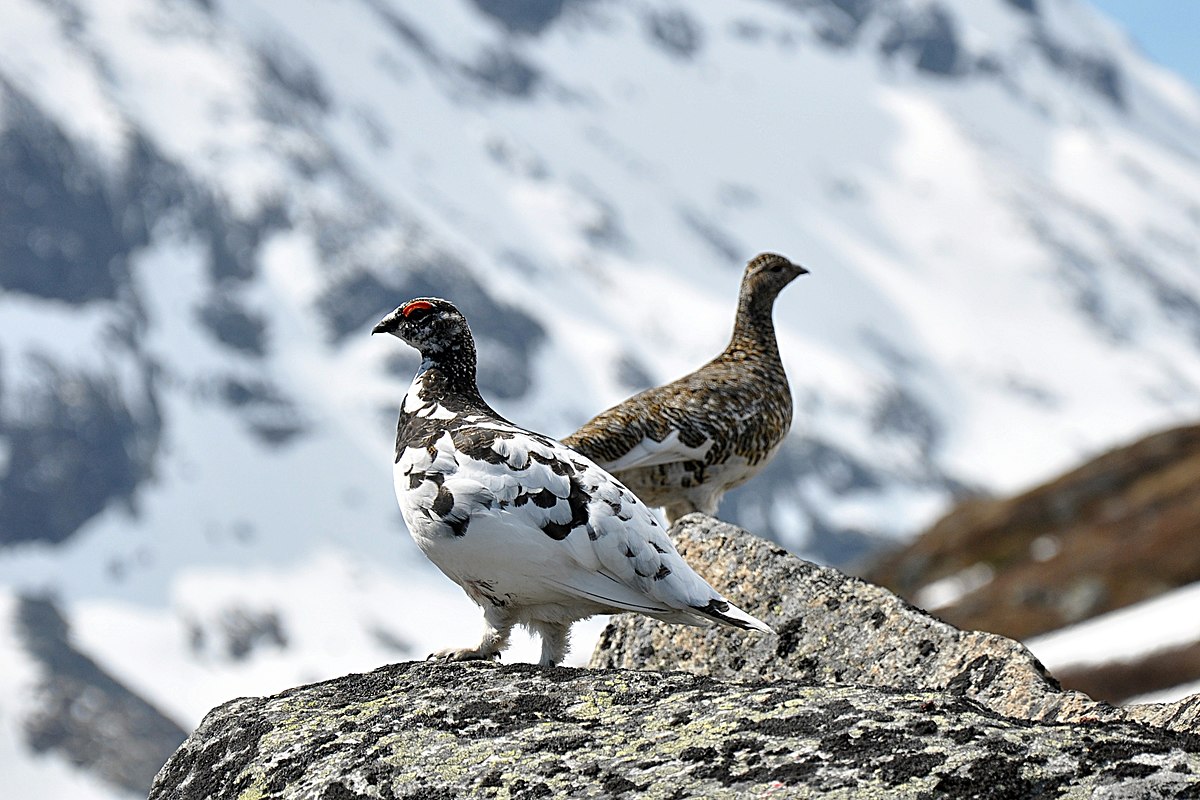
Wikipedia: Rock ptarmigan Source: OTHER 1200px-Rock_Ptarmigan_%28Lagopus_Muta%29.jpg
Classification: Genus Lagopus; Subfamily Grouses (Tetraoninae); Family Turkeys (Phasianidae)
This bird appears across the great seas in the following continents: Europe, North America.
Deutschland: Brut-, Jahresvogel RL R
Vocalization:
Calls:
Physical details: length=34-36 cm, wingspan=54-60 cm, weight=350-600 g
Habitats: Mountain Details Wikipedia eBird Vogelwarte BirdLife ZH ornitho.ch bird-song.ch Audubon AllAboutBirds Xeno-Canto BirdID NABU
Eurasian pygmy-owl / Sperlingskauz (Glaucidium passerinum)
Also known as: Eurasian pygmy owl

Wikipedia: Eurasian pygmy-owl Source: OTHER Glaucidium_passerinum_20110413.jpg
Classification: Genus Glaucidium; Family Strigidae
Deutschland: Brut-, Jahresvogel
Calls:
Physical details: length=16-17 cm, wingspan=34-36 cm, weight=47-80 g
Habitats: Forest Details Wikipedia eBird Vogelwarte BirdLife ZH ornitho.ch bird-song.ch Xeno-Canto BirdID NABU
Smew / Zwergsäger (Mergellus albellus)
Alternate classification: Mergus albellus
Also known as: Zwergsaeger
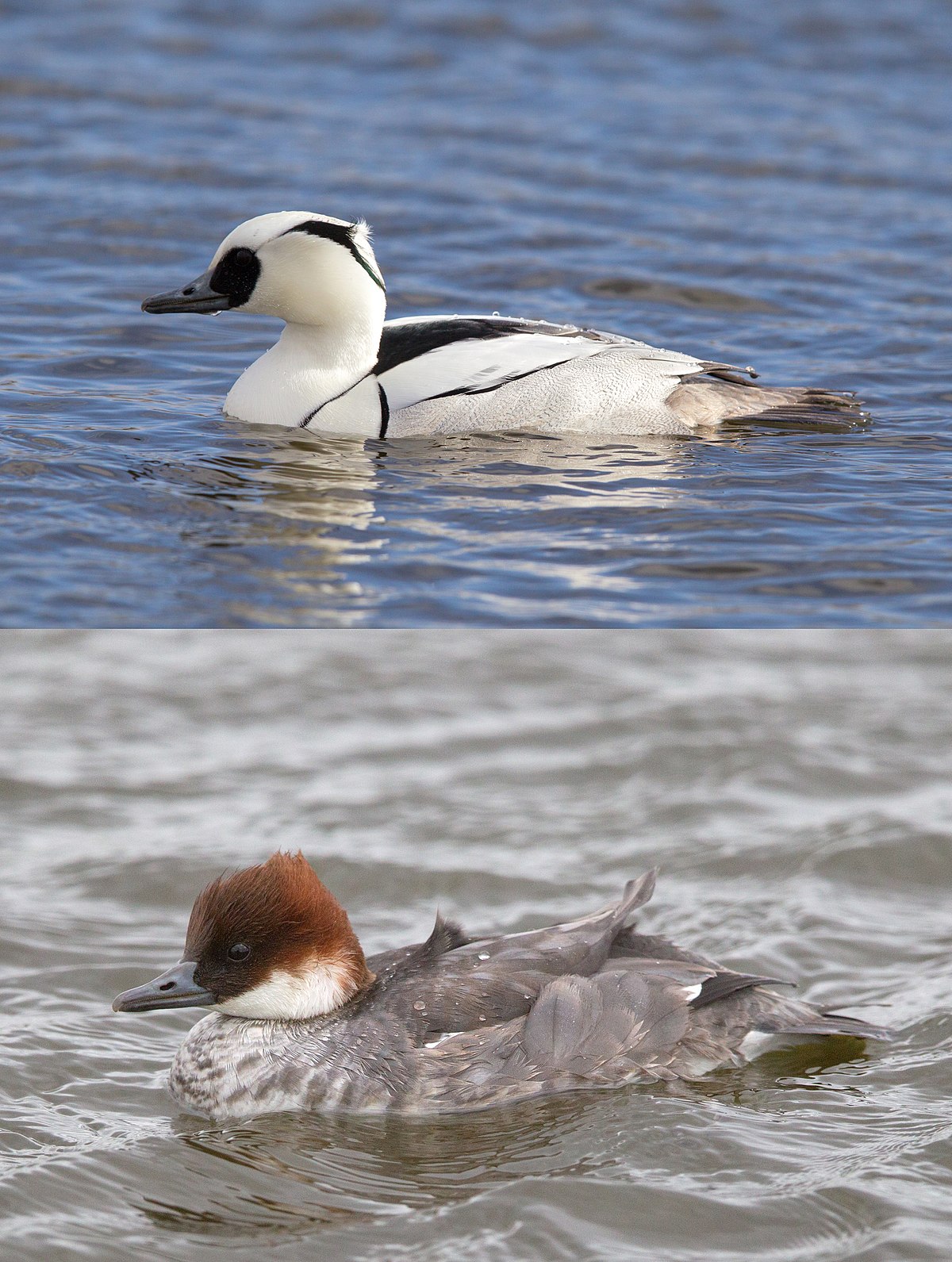
Wikipedia: Smew Source: OTHER 1200px-Zwergsaeger_maenchen_weibchen.jpg
Classification: Genus Mergellus; Subfamily Dabbling ducks plus extinct (Anatinae); Family Waterfowl (Anatidae)
Deutschland: Zugvogel, Wintergast
Vocalization:
Calls:
Physical details: length=38-44 cm, wingspan=55-69 cm, weight=500-800 g
Habitats: River and lake Details Wikipedia eBird Vogelwarte BirdLife ZH ornitho.ch Xeno-Canto BirdID NABU
Aquatic warbler / Seggenrohrsänger (Acrocephalus paludicola)
Alternate classification: Sylvia paludicola
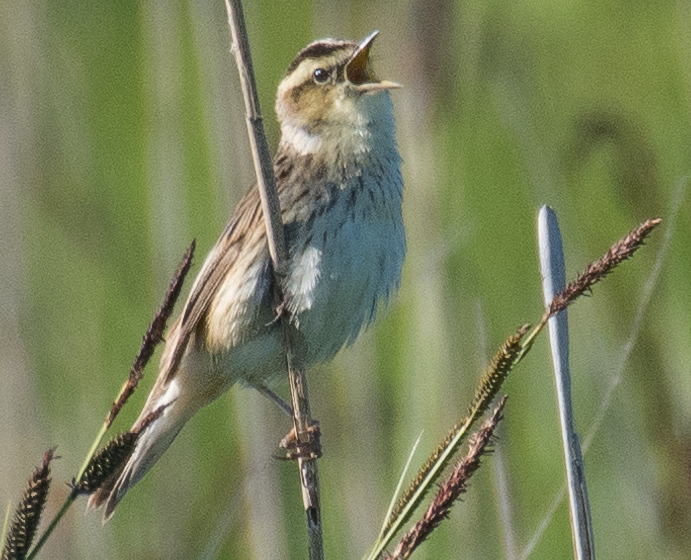
Wikipedia: Aquatic warbler Source: OTHER Acrocephalus_paludicola_Bagno_Lawki.jpg
Classification: Genus Acrocephalus; Subfamily Acrocephalinae; Family Old world warblers (Sylviidae)
Deutschland: Brut-, seltener Zugvogel RL 1
Details Wikipedia eBird Vogelwarte BirdLife ZH ornitho.ch Xeno-Canto NABU
Taiga bean goose / Saatgans (Anser fabalis)
Alternate classification: Anser albifrons fabalis
Also known as: Bean goose, Saatgans, Taiga bean-goose

Wikipedia: Taiga bean goose Source: OTHER Bean.goose.600pix.jpg
Classification: Genus Geese (Anser); Tribe Anserini; Subfamily Anserinae; Family Waterfowl (Anatidae)
This bird appears across the great seas in the following continents: Europe, North America, Africa.
Deutschland: Zugvogel, Wintergast Bruten gehen auf entflogene Tiere zurück
Calls:
Physical details: length=66-84 cm, wingspan=142-175 cm, weight=2220-4060 g
Habitats: River and lake Details Wikipedia eBird Vogelwarte BirdLife ZH ornitho.ch Audubon AllAboutBirds Xeno-Canto BirdID NABU
Eurasian dotterel / Mornellregenpfeifer (Charadrius morinellus)
Alternate classification: Eudromias morinellus

Wikipedia: Eurasian dotterel Source: OTHER Charadrius_morinellus_male.jpg
Classification: Genus Charadrius; Family Charadriidae
Deutschland: ausnahmsweise Brutvogel, Zugvogel RL 0
Calls:
Physical details: length=20-22 cm, wingspan=57-64 cm, weight=90-130 g
Habitats: Wetland Details Wikipedia eBird Vogelwarte BirdLife ZH ornitho.ch Xeno-Canto BirdID NABU
Hazel grouse / Haselhuhn (Tetrastes bonasia)
Alternate classification: Tetrao bonasia

Wikipedia: Hazel grouse Source: OTHER Haselhuhn-01.jpg
Classification: Genus Tetrastes; Subfamily Grouses (Tetraoninae); Family Turkeys (Phasianidae)
Deutschland: Brut-, Jahresvogel RL 2
Song:
Calls:
Physical details: length=35-37 cm, wingspan=48-54 cm, weight=310-490 g
Habitats: Mountain Details Wikipedia eBird Vogelwarte BirdLife ZH ornitho.ch bird-song.ch Xeno-Canto BirdID NABU
Snow bunting / Schneeammer (Plectrophenax nivalis)
Alternate classification: Calcarius nivalis
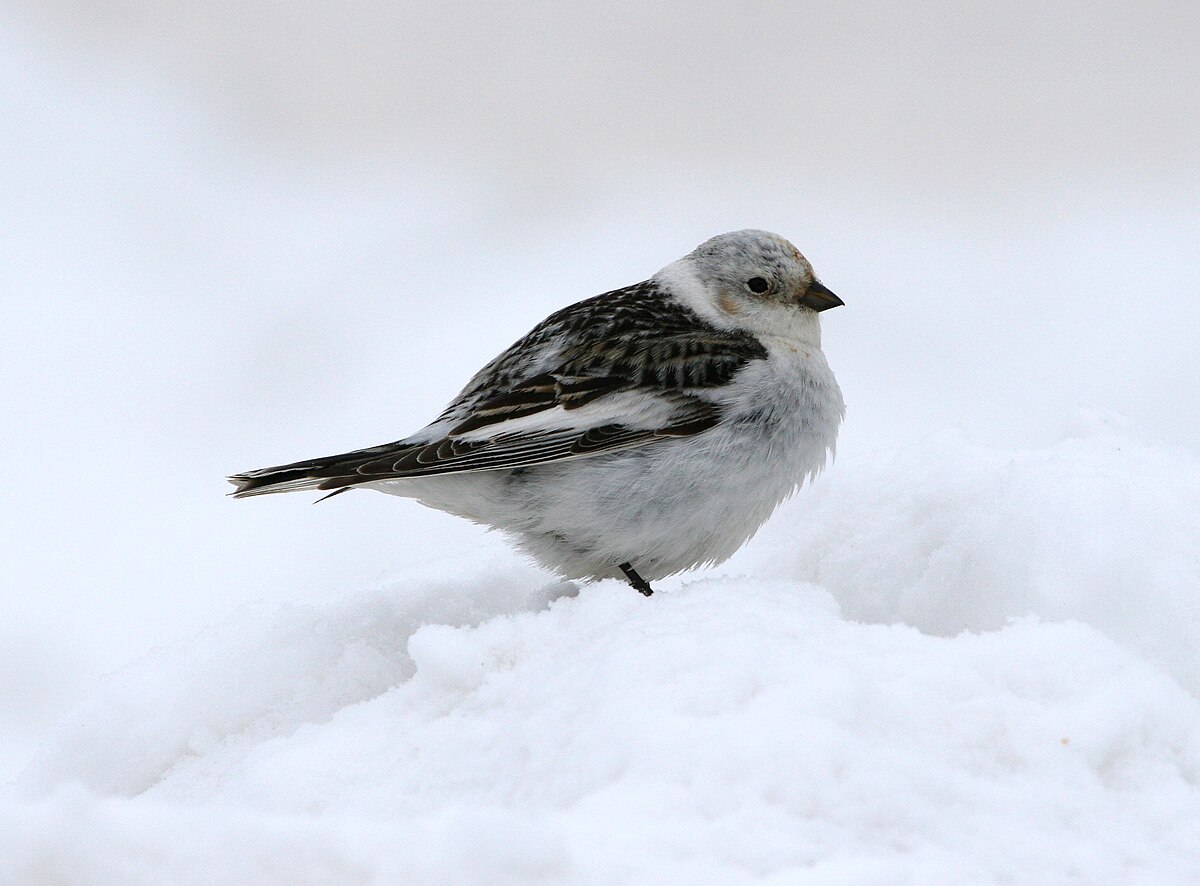
Wikipedia: Snow bunting Source: OTHER 1200px-Plectrophenax_nivalis1.jpg
Classification: Genus Plectrophenax; Tribe Emberizini; Subfamily Emberizinae; Family Fringillidae
This bird appears across the great seas in the following continents: Europe, North America.
Deutschland: Wintergast
Song:
Calls:
Physical details: length=16-17 cm, wingspan=32-38 cm, weight=28-50 g
Details Wikipedia eBird A-Z Animals Vogelwarte BirdLife ZH ornitho.ch Audubon AllAboutBirds Xeno-Canto BirdID NABU
Black-throated loon / Prachttaucher (Gavia arctica)
Also known as: Arctic loon, Black-throated diver

Wikipedia: Black-throated loon Source: OTHER Black-throated_Diver%2C_Oulu%2C_Finland_02_%2815195370798%29.jpg
Classification: Genus Gavia; Family Loons (Gaviidae)
This bird appears across the great seas in the following continents: Europe, North America.
Deutschland: Zugvogel, Wintergast
Habitats: River and lake Details Wikipedia eBird Vogelwarte BirdLife ZH ornitho.ch Audubon AllAboutBirds Xeno-Canto NABU
Jack snipe / Zwergschnepfe (Lymnocryptes minimus)

Wikipedia: Jack snipe Source: OTHER 1200px-Lymnocryptes_minimus.jpg
Classification: Genus Lymnocryptes; Family Shorebirds (Scolopacidae)
Deutschland: ehemaliger Brutvogel, Zugvogel, Wintergast
Vocalization:
Calls:
Physical details: length=17-19 cm, wingspan=38-42 cm, weight=35-73 g
Habitats: Wetland Details Wikipedia eBird Vogelwarte BirdLife ZH ornitho.ch Xeno-Canto BirdID NABU
Greater scaup / Bergente (Aythya marila)
Alternate classification: Anas marila

Wikipedia: Greater scaup Source: OTHER 1200px-2017-03-24_Aythya_marila%2C_male%2C_Killingworth_Lake%2C_Northumberland_15.jpg
Classification: Genus Aythya; Tribe Diving ducks (Aythyini); Subfamily Dabbling ducks plus extinct (Anatinae); Family Waterfowl (Anatidae)
This bird appears across the great seas in the following continents: Europe, North America.
Deutschland: Zugvogel, Wintergast RL R
Calls:
Physical details: length=42-51 cm, wingspan=72-84 cm, weight=700-1300 g
Habitats: River and lake Looks similar to: Red-breasted merganser. Details Wikipedia eBird Vogelwarte BirdLife ZH ornitho.ch Audubon AllAboutBirds Xeno-Canto BirdID NABU
Eurasian eagle-owl / Uhu (Bubo bubo)
Alternate classification: Strix bubo
Also known as: Eurasian eagle owl
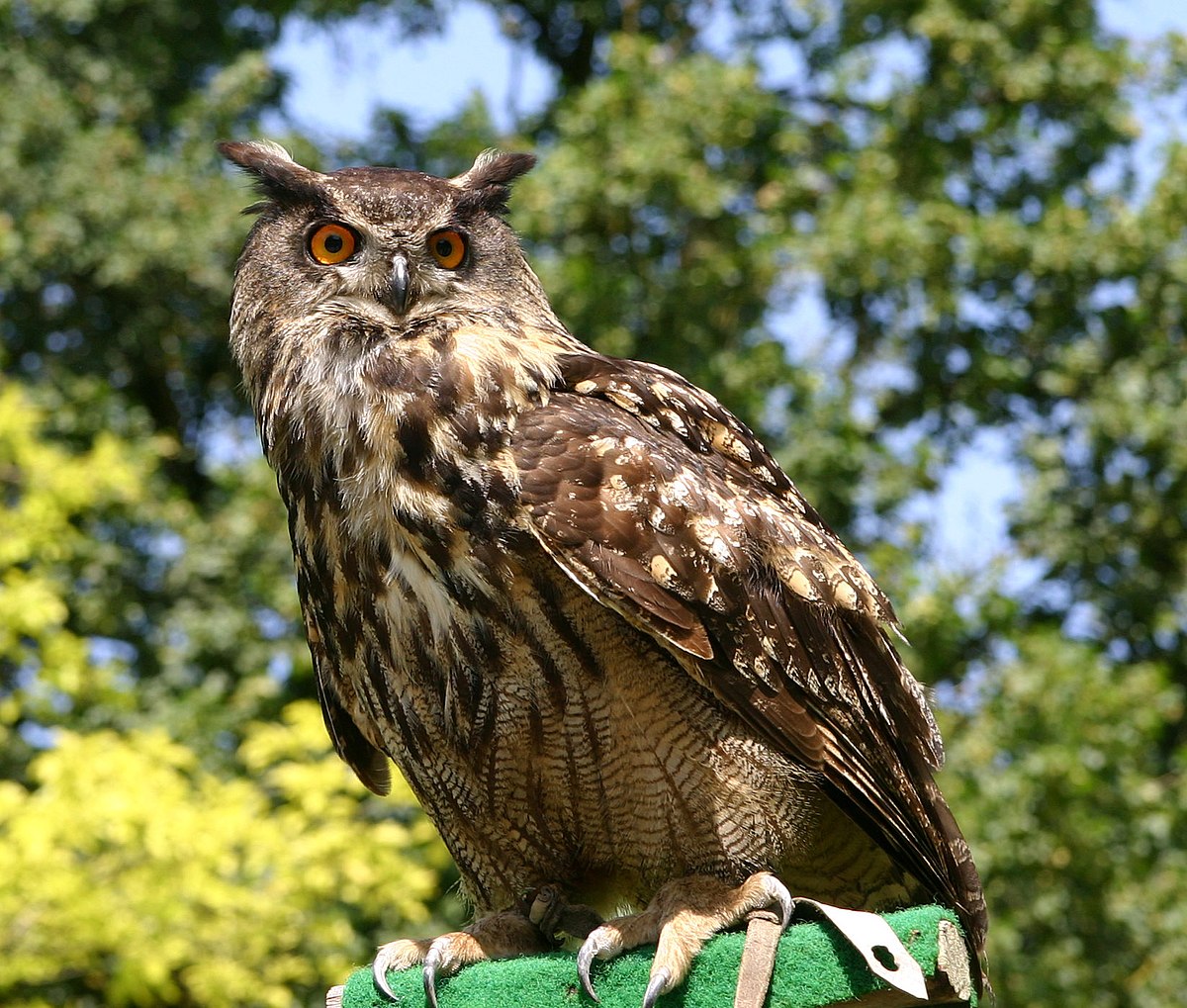
Wikipedia: Eurasian eagle-owl Source: OTHER 1200px-Uhu-muc.jpg
Classification: Genus Eagle owls (Bubo); Family Strigidae
Deutschland: Brut-, Jahresvogel
Song:
Calls:
Physical details: length=60-75 cm, wingspan=160-188 cm, weight=1800-4200 g
Habitats: Agricultural Details Wikipedia eBird Vogelwarte BirdLife ZH ornitho.ch bird-song.ch Xeno-Canto BirdID NABU
Western capercaillie / Auerhuhn (Tetrao urogallus)

Wikipedia: Western capercaillie Source: OTHER 1200px-Tetrao_urogallus_Richard_Bartz.jpg
Classification: Genus Tetrao; Subfamily Grouses (Tetraoninae); Family Turkeys (Phasianidae)
Deutschland: Brut-, Jahresvogel RL 1
Vocalization:
Song:
Calls:
Physical details: length=60-87 cm, wingspan=87-125 cm, weight=1500-5000 g
Habitats: Mountain Details Wikipedia eBird Vogelwarte BirdLife ZH ornitho.ch Xeno-Canto BirdID NABU
Boreal owl / Raufusskauz (Aegolius funereus)
Alternate classification: Strix funerea

Wikipedia: Boreal owl Source: OTHER Aegolius-funereus-001.jpg
Classification: Genus Saw-whet owls (Aegolius); Family Strigidae
This bird appears across the great seas in the following continents: Europe, North America.
Deutschland: Brut-, Jahresvogel
Habitats: Forest Details Wikipedia eBird Vogelwarte BirdLife ZH ornitho.ch bird-song.ch Audubon AllAboutBirds Xeno-Canto NABU
Long-tailed duck / Eisente (Clangula hyemalis)

Wikipedia: Long-tailed duck Source: OTHER Long-tailed-duck.jpg
Classification: Genus Clangula; Subfamily Dabbling ducks plus extinct (Anatinae); Family Waterfowl (Anatidae)
This bird appears across the great seas in the following continents: Europe, North America.
Deutschland: Zugvogel, Wintergast
Habitats: River and lake Details Wikipedia eBird Vogelwarte BirdLife ZH ornitho.ch Audubon AllAboutBirds Xeno-Canto NABU
Eurasian spoonbill / Löffler (Platalea leucorodia)

Wikipedia: Eurasian spoonbill Source: OTHER 1200px-Eurasian_Spoonbill.jpg
Classification: Genus Platalea; Family Threskiornithidae
Deutschland: Brut-, Zugvogel RL R
Vocalization:
Physical details: length=80-90 cm, wingspan=115-130 cm, weight=1130-1960 g
Details Wikipedia eBird Vogelwarte BirdLife ZH ornitho.ch Xeno-Canto BirdID NABU
Merlin / Merlin (Falco columbarius)
Also known as: Merlin (Vogel)

Merlin SoundID bird list. Source: OTHER Merlin SoundID bird list.jpg
Classification: Genus Falcons (Falco); Family Falconidae
This bird appears across the great seas in the following continents: Europe, North America, South America, Africa.
Deutschland: Zugvogel, Wintergast
gray bird april 8 in tree no answer from *
Vocalization:
Calls:
Physical details: length=25-30 cm, wingspan=50-62 cm, weight=125-300 g
Habitats: Agricultural Details Wikipedia eBird Vogelwarte BirdLife ZH ornitho.ch Audubon AllAboutBirds Xeno-Canto BirdID NABU
Red-necked grebe / Rothalstaucher (Podiceps grisegena)

Wikipedia: Red-necked grebe Source: OTHER 1200px-Podicepsgrisegena.jpg
Classification: Genus Podiceps; Family Grebes (Podicipedidae)
This bird appears across the great seas in the following continents: Europe, North America.
Deutschland: Brut-, Zugvogel
Habitats: River and lake Details Wikipedia eBird Vogelwarte BirdLife ZH ornitho.ch Audubon AllAboutBirds Xeno-Canto NABU
Eurasian crag-martin / Felsenschwalbe (Ptyonoprogne rupestris)
Also known as: Eurasian crag martin

Wikipedia: Eurasian crag-martin Source: OTHER Ptyonoprogne_rupestris_-Europe-8.jpg Europe
Classification: Genus Ptyonoprogne; Family Swallows (Hirundinidae)
Deutschland: Brut-, Zugvogel RL R
Vocalization:
Song:
Physical details: length=14 cm, wingspan=32-34 cm, weight=17-30 g
Habitats: Mountain Details Wikipedia eBird Vogelwarte BirdLife ZH ornitho.ch Xeno-Canto BirdID NABU
Barred warbler / Sperbergrasmücke (Sylvia nisoria)

Wikipedia: Barred warbler Source: OTHER Sylvia_nisoria.jpg
Classification: Genus Sylvia; Subfamily Sylviinae; Family Old world warblers (Sylviidae)
Deutschland: Brut-, Zugvogel RL 3
Vocalization:
Song:
Calls:
Physical details: length=15 cm, wingspan=23-27 cm, weight=22-28 g
Details Wikipedia eBird Vogelwarte BirdLife ZH ornitho.ch Xeno-Canto BirdID NABU
Common scoter / Trauerente (Melanitta nigra)
Alternate classification: Oidemia nigra

Wikipedia: Common scoter Source: OTHER 1200px-Eurasian_common_scoter.jpg
Classification: Genus Melanitta; Subfamily Dabbling ducks plus extinct (Anatinae); Family Waterfowl (Anatidae)
This bird appears across the great seas in the following continents: Europe, North America, Africa.
General:
Vocalization:
Physical details: length=44-54 cm, wingspan=79-90 cm, weight=650-1300 g
Habitats: River and lake Details Wikipedia eBird Vogelwarte BirdLife ZH ornitho.ch Audubon AllAboutBirds Xeno-Canto BirdID NABU
Griffon vulture / Gänsegeier (Gyps fulvus)
Alternate classification: Vultur fulvus
Also known as: Eurasian griffon

Wikipedia: Griffon vulture Source: OTHER 1200px-Gypful.jpg
Classification: Genus Gyps; Subfamily True hawks (Accipitrinae); Family Accipitridae
General:
Vocalization:
Physical details: length=95-105 cm, wingspan=240-280 cm, weight=7500-11000 g
Habitats: Agricultural Details Wikipedia eBird Vogelwarte BirdLife ZH ornitho.ch Xeno-Canto BirdID NABU
Eastern subalpine warbler / Weissbartgrasmücke (Sylvia cantillans)
Also known as: Subalpine warbler, Bartgrasmücke
General: Song:
Calls:
Physical details: length=12 cm, wingspan=15-19 cm, weight=8-13 g
Details Wikipedia eBird Vogelwarte BirdLife ZH ornitho.ch Xeno-Canto BirdID NABU
Greater short-toed lark / Kurzzehenlerche (Calandrella brachydactyla)
Alternate classification: Calandrella cinerea brachydactyla

Wikipedia: Greater short-toed lark Source: OTHER Greater_short-toed_lark_%28Calandrella_brachydactyla%29_Photograph_by_Shantanu_Kuveskar.jpg
Classification: Genus Calandrella; Family Larks (Alaudidae)
General:
Details Wikipedia eBird Vogelwarte BirdLife ZH ornitho.ch Xeno-Canto NABU
Short-toed snake-eagle / Schlangenadler (Circaetus gallicus)
Also known as: Short-toed snake eagle
Wikipedia: Short-toed snake-eagle Source: OTHER PikiWiki_Israel_43227_Wildlife_and_Plants_of_Israel.JPG
Classification: Genus Circaetus; Subfamily True hawks (Accipitrinae); Family Accipitridae
Habitats: Agricultural Details Wikipedia eBird Vogelwarte BirdLife ZH ornitho.ch Xeno-Canto NABU
Eurasian scops owl / Zwergohreule (Otus scops)
Also known as: Eurasian scops-owl

Wikipedia: Eurasian scops owl Source: OTHER 1200px-Scops_Owl_%28Otus_scops%29%2C_Kalloni%2C_Lesvos%2C_Greece%2C_19.04.2015_%2816773748434%29.jpg
Classification: Genus Otus; Family Strigidae
Song:
Calls:
Physical details: length=19-20 cm, wingspan=53-63 cm, weight=60-120 g
Habitats: Agricultural Details Wikipedia eBird Vogelwarte BirdLife ZH ornitho.ch Xeno-Canto BirdID NABU
Pallid swift / Fahlsegler (Apus pallidus)
Alternate classification: Cypselus pallidus

Wikipedia: Pallid swift Source: OTHER Apus_pallidus_-Greece-8.jpg
Classification: Genus Apus; Subfamily Apodinae; Family Swifts (Apodidae)
General:
Vocalization:
Calls:
Physical details: length=16-17 cm, wingspan=42-46 cm, weight=41 g
Habitats: Settlement Details Wikipedia eBird Vogelwarte BirdLife ZH ornitho.ch Xeno-Canto BirdID NABU
Garganey (alternate) / Spatula querquedula (alternate) (Spatula querquedula)
Also known as: Garganey
Classification: Genus Spatula; Family Waterfowl (Anatidae)
General:
Vocalization:
Calls:
Physical details: length=37-41 cm, wingspan=60-63 cm, weight=250-450 g
Details Wikipedia eBird Vogelwarte BirdLife ZH ornitho.ch Xeno-Canto BirdID NABU
Eurasian stone-curlew / Triel (Burhinus oedicnemus)
Alternate classification: Charadrius oedicnemus
Also known as: Eurasian thick-knee

Wikipedia: Eurasian stone-curlew Source: OTHER 1200px-Burhinus_oedicnemus_insularum_Lanzarote_1.jpg
Classification: Genus Burhinus; Family Burhinidae
General:
Calls:
Physical details: length=40-44 cm, wingspan=77-85 cm, weight=430-500 g
Habitats: Wetland Details Wikipedia eBird Vogelwarte BirdLife ZH ornitho.ch Xeno-Canto BirdID NABU
Tundra swan / Pfeifschwan (Cygnus columbianus)
Alternate classification: Olor columbianus
Also known as: Whistling swan

Wikipedia: Tundra swan Source: OTHER 1200px-Cygnus_bewickii_01.jpg
Classification: Genus Swans (Cygnus); Tribe Swans (Cygnini); Subfamily Anserinae; Family Waterfowl (Anatidae)
This bird appears across the great seas in the following continents: Europe, North America.
General:
Vocalization:
Calls:
Physical details: length=115-127 cm, wingspan=180-211 cm, weight=3400-7800 g
Details Wikipedia eBird Vogelwarte BirdLife ZH ornitho.ch Audubon AllAboutBirds Xeno-Canto BirdID NABU
Rock partridge / Steinhuhn (Alectoris graeca)
Alternate classification: Perdix graeca
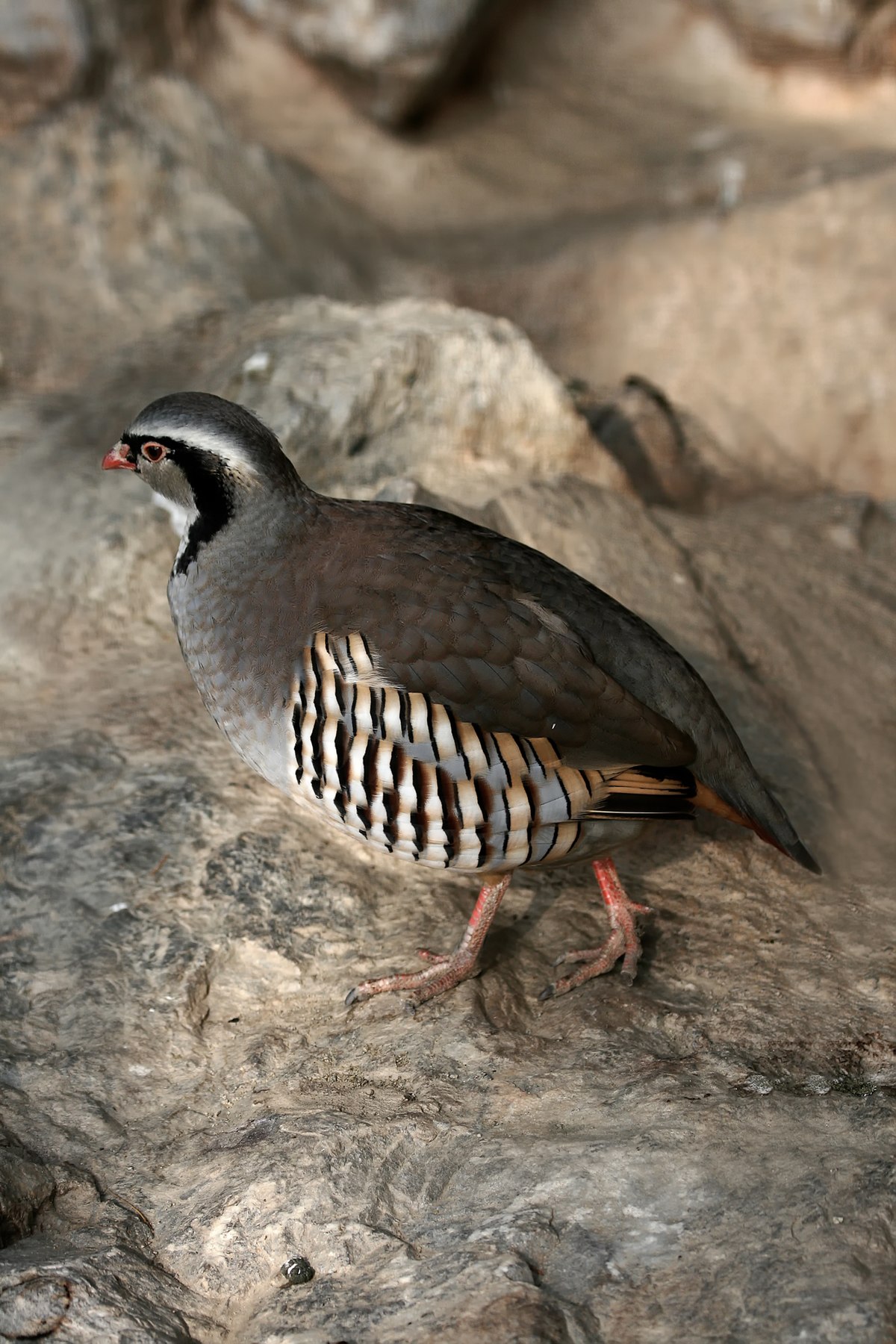
Wikipedia: Rock partridge Source: OTHER 1200px-Steinhuhn_Alectoris_graeca.jpg
Classification: Genus Alectoris; Subfamily Perdicinae; Family Turkeys (Phasianidae)
General:
Habitats: Mountain Details Wikipedia eBird Vogelwarte BirdLife ZH ornitho.ch bird-song.ch Xeno-Canto NABU